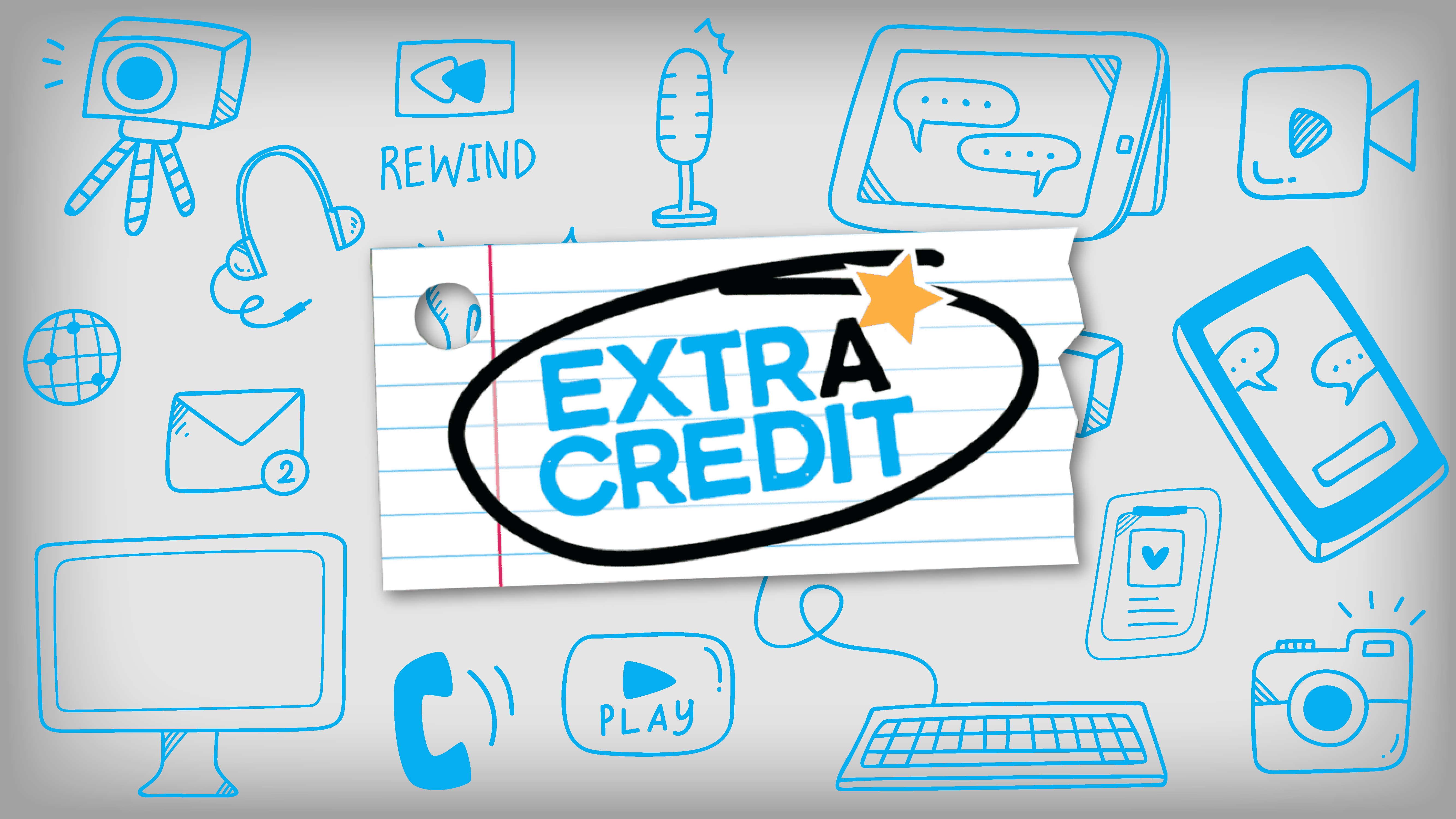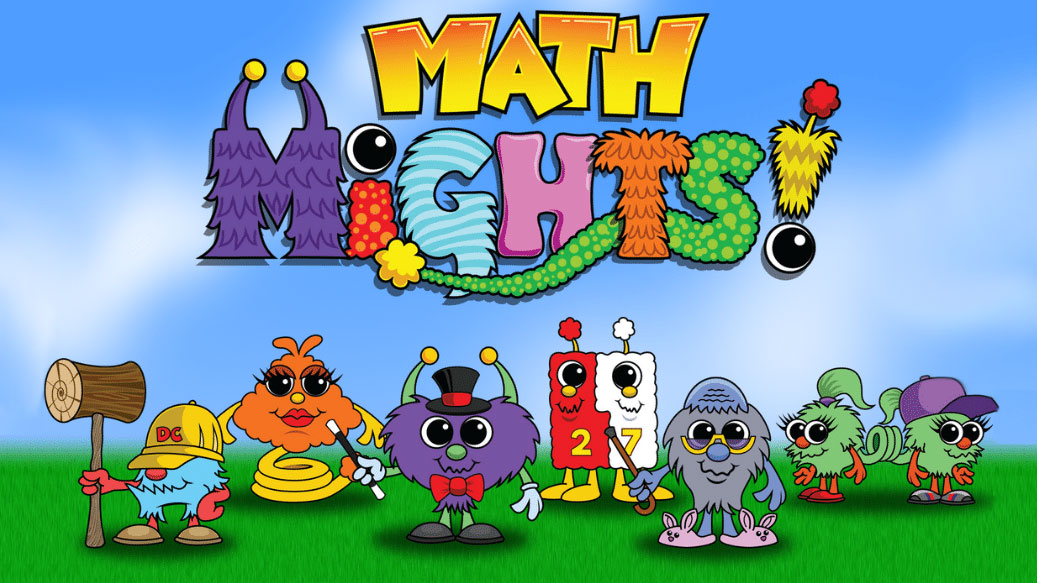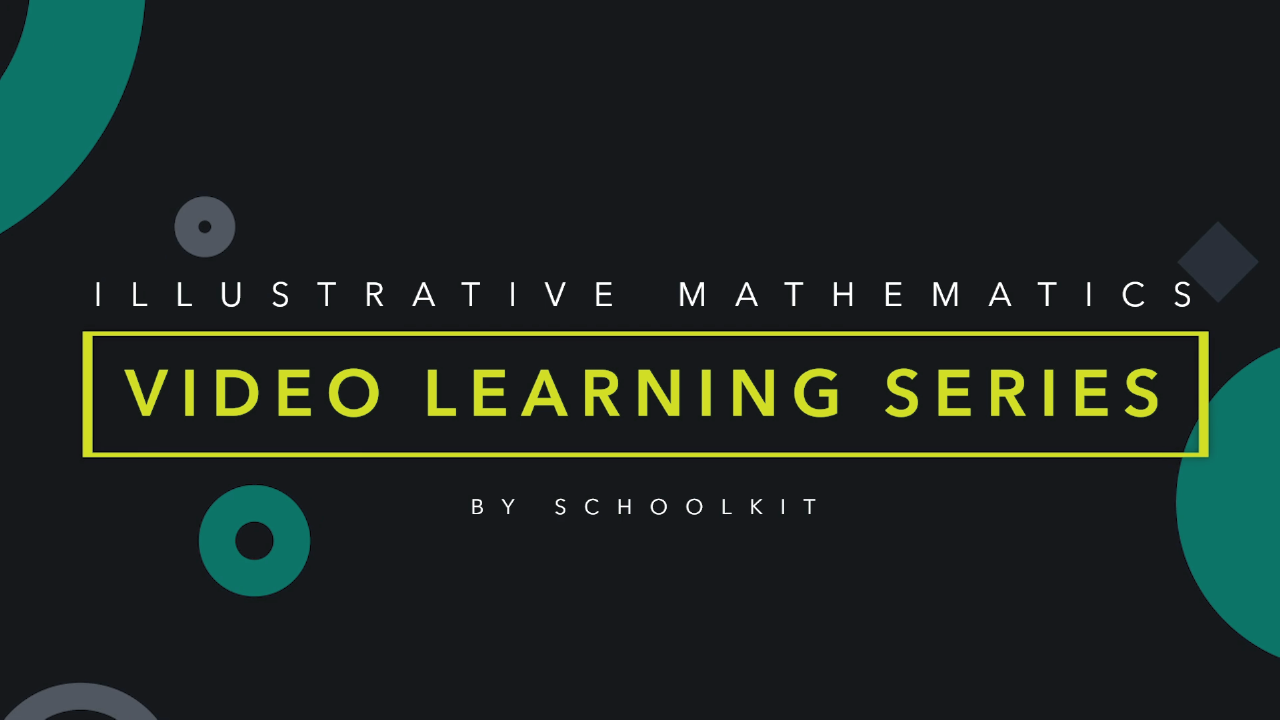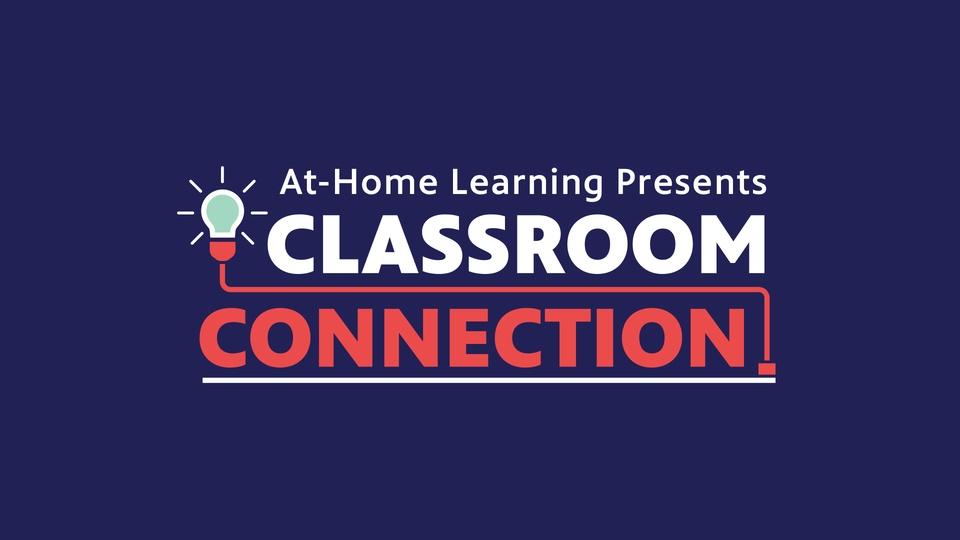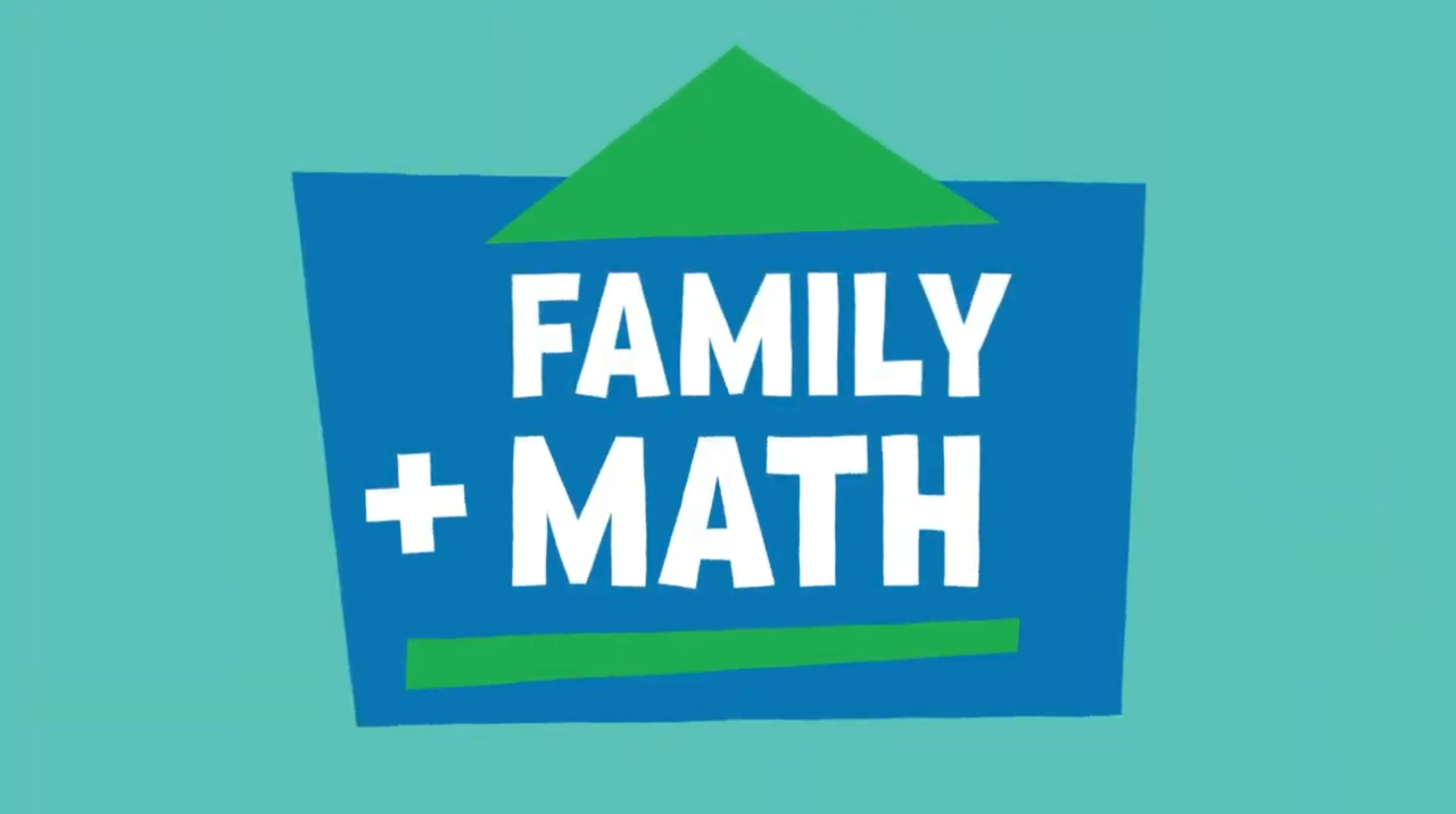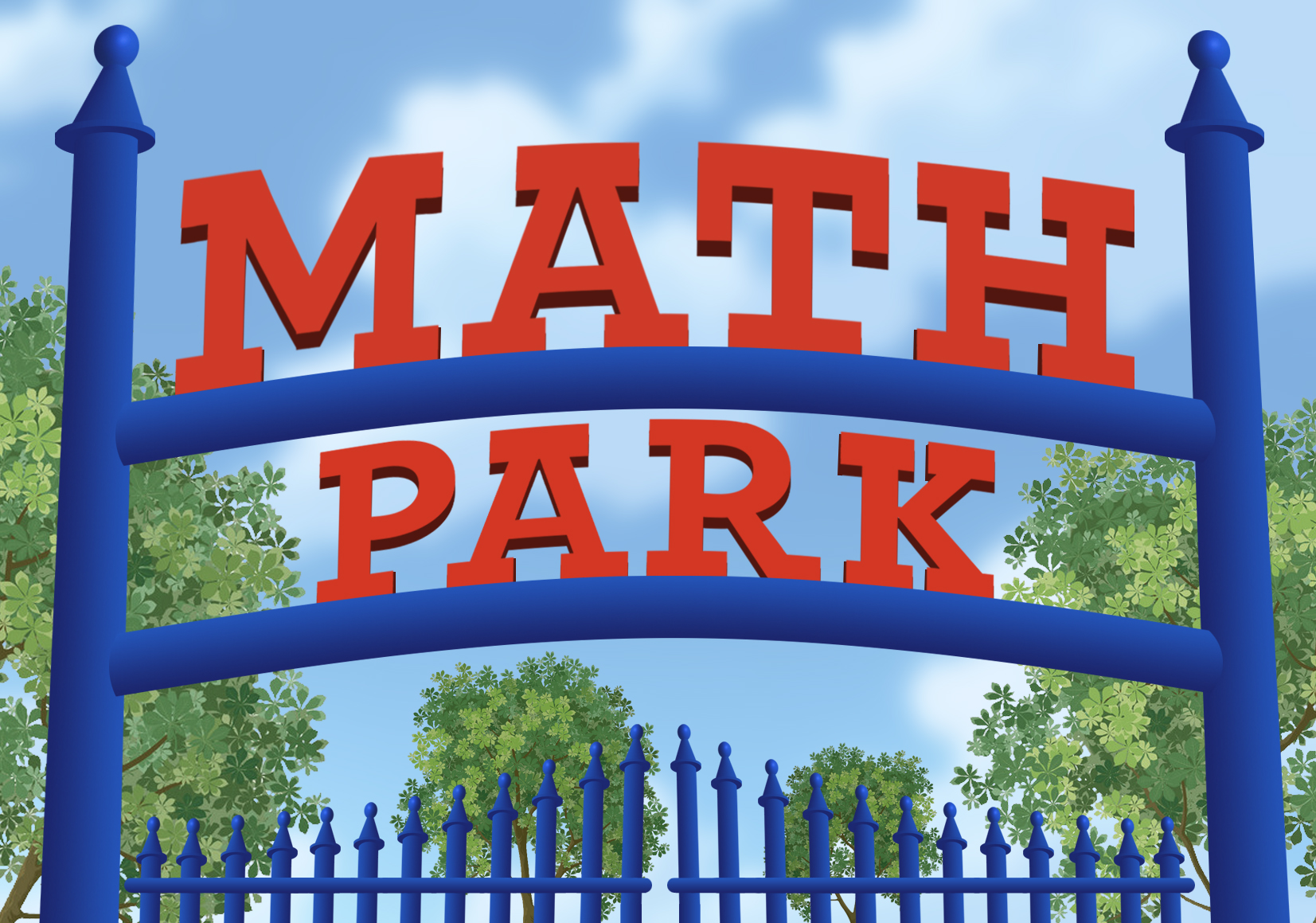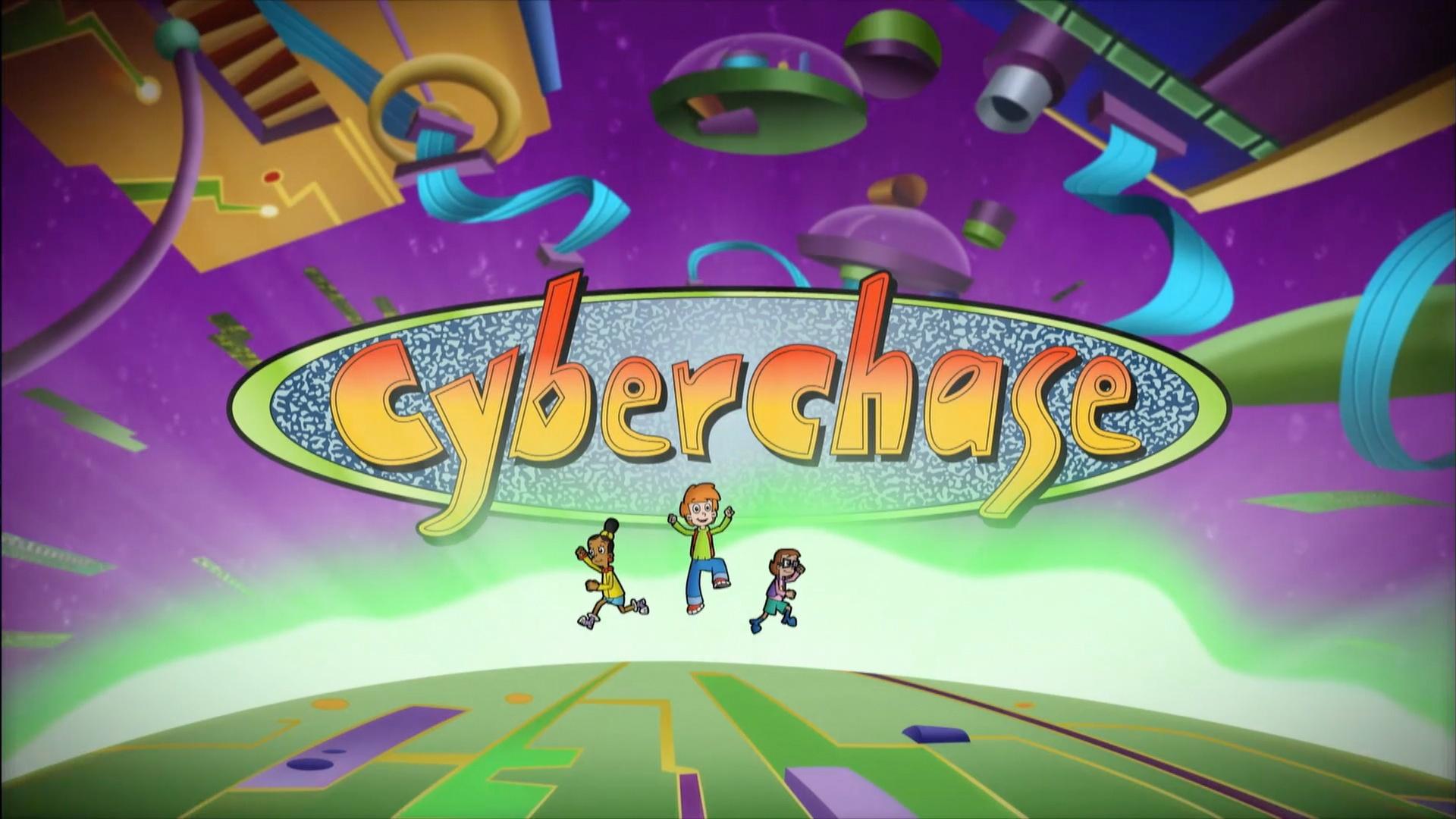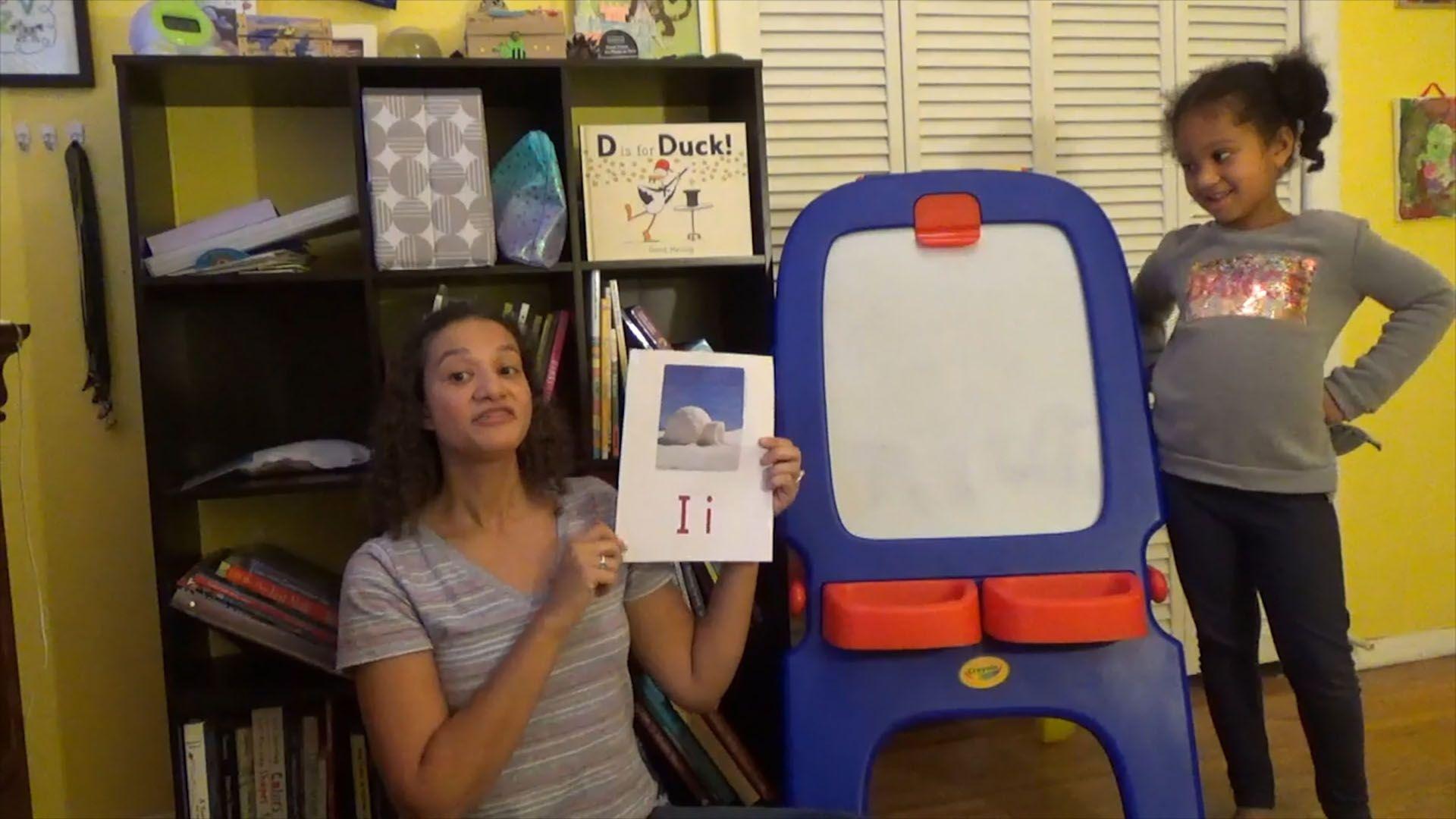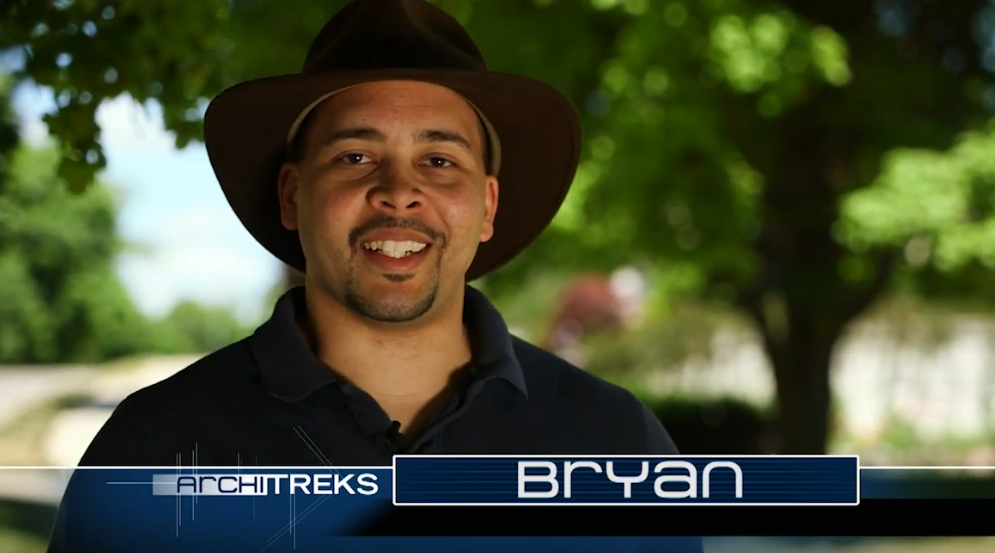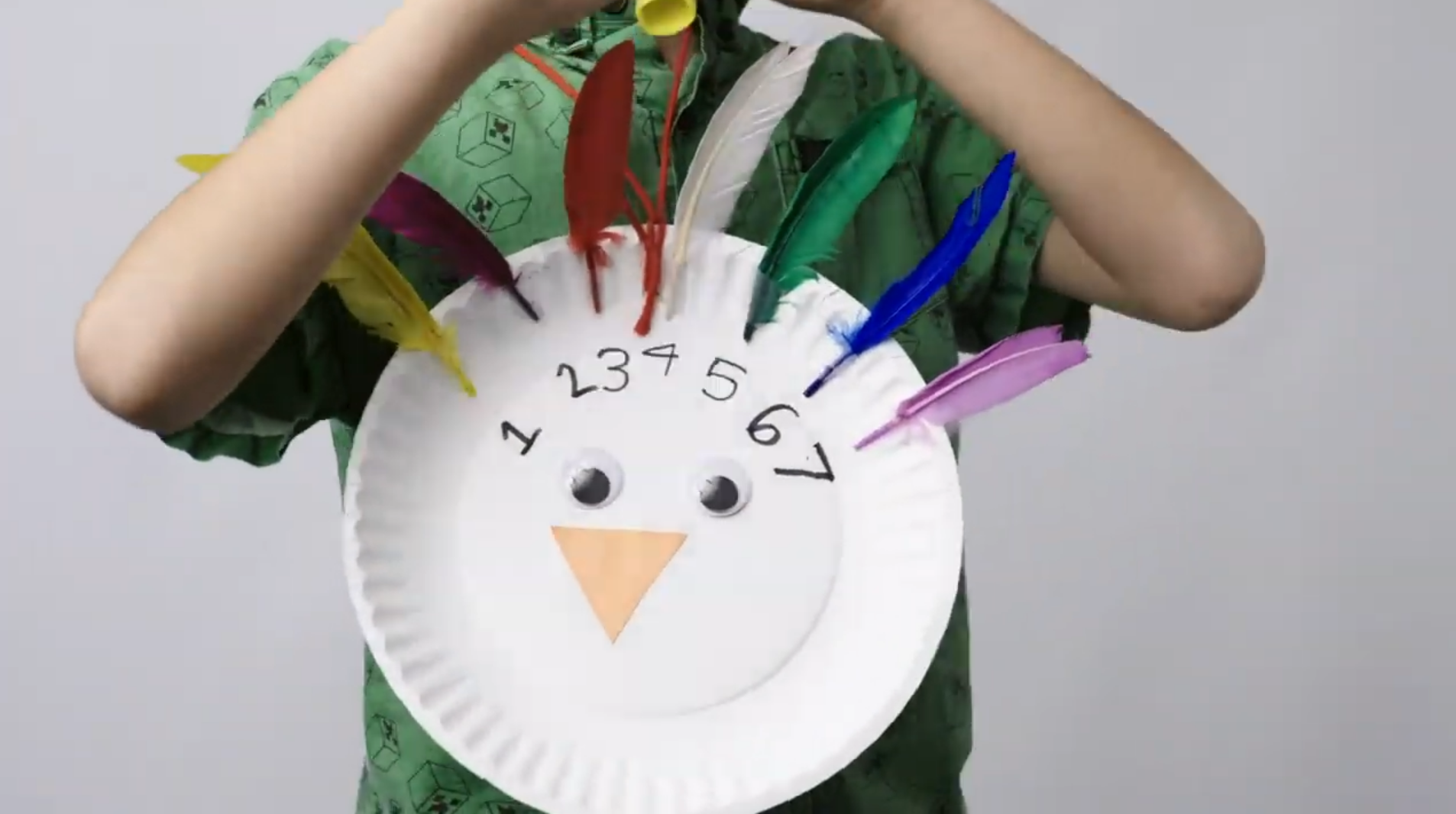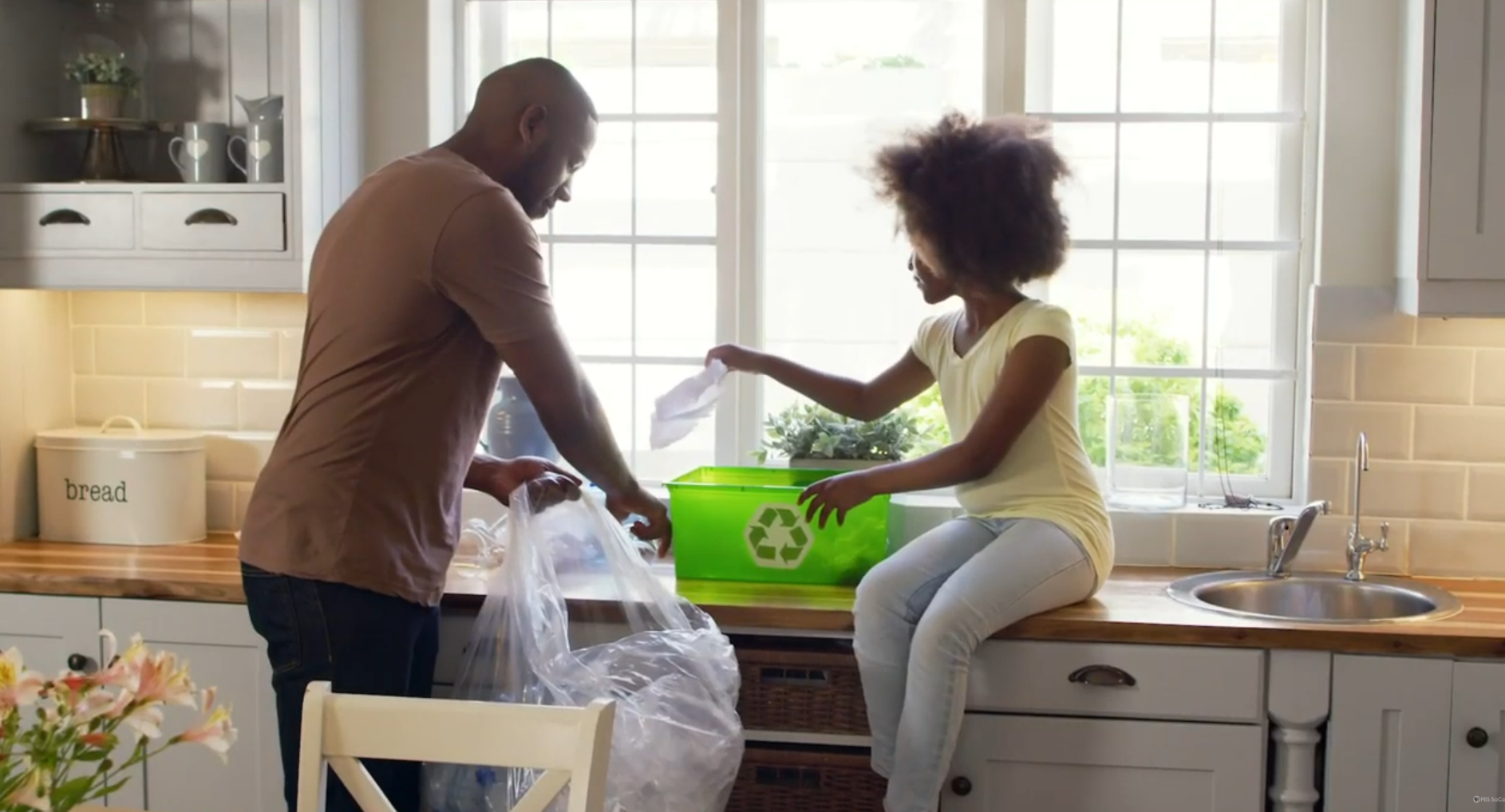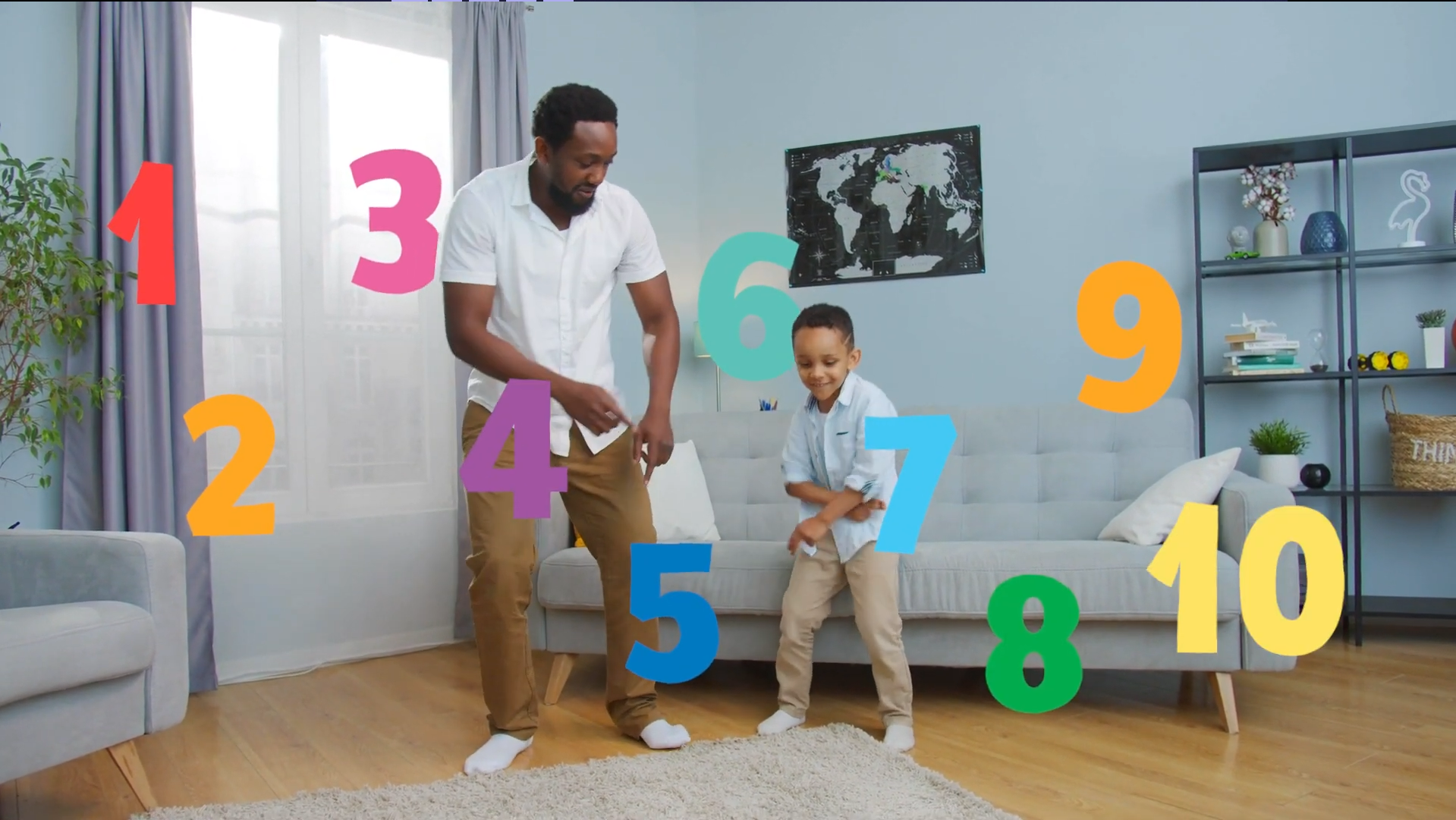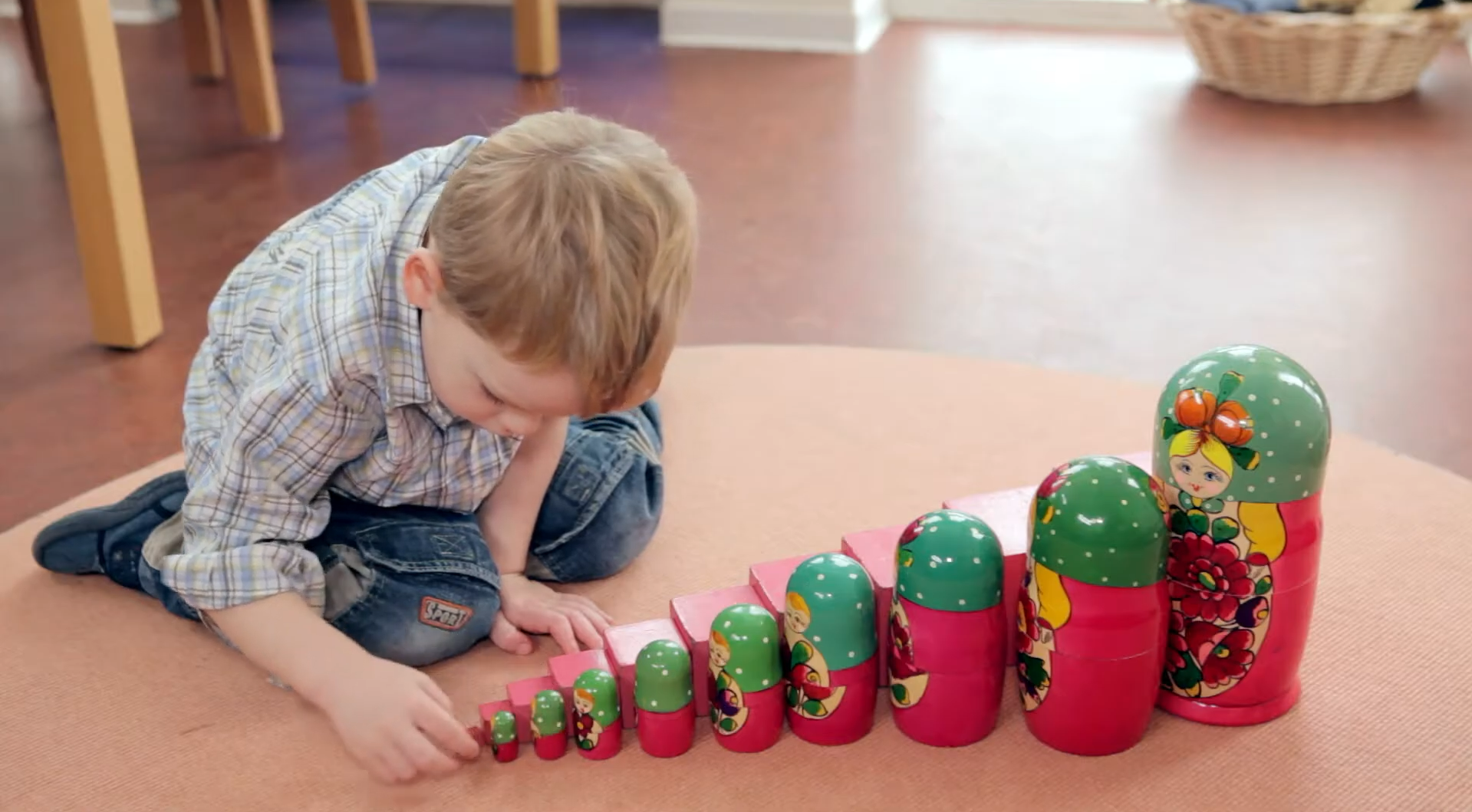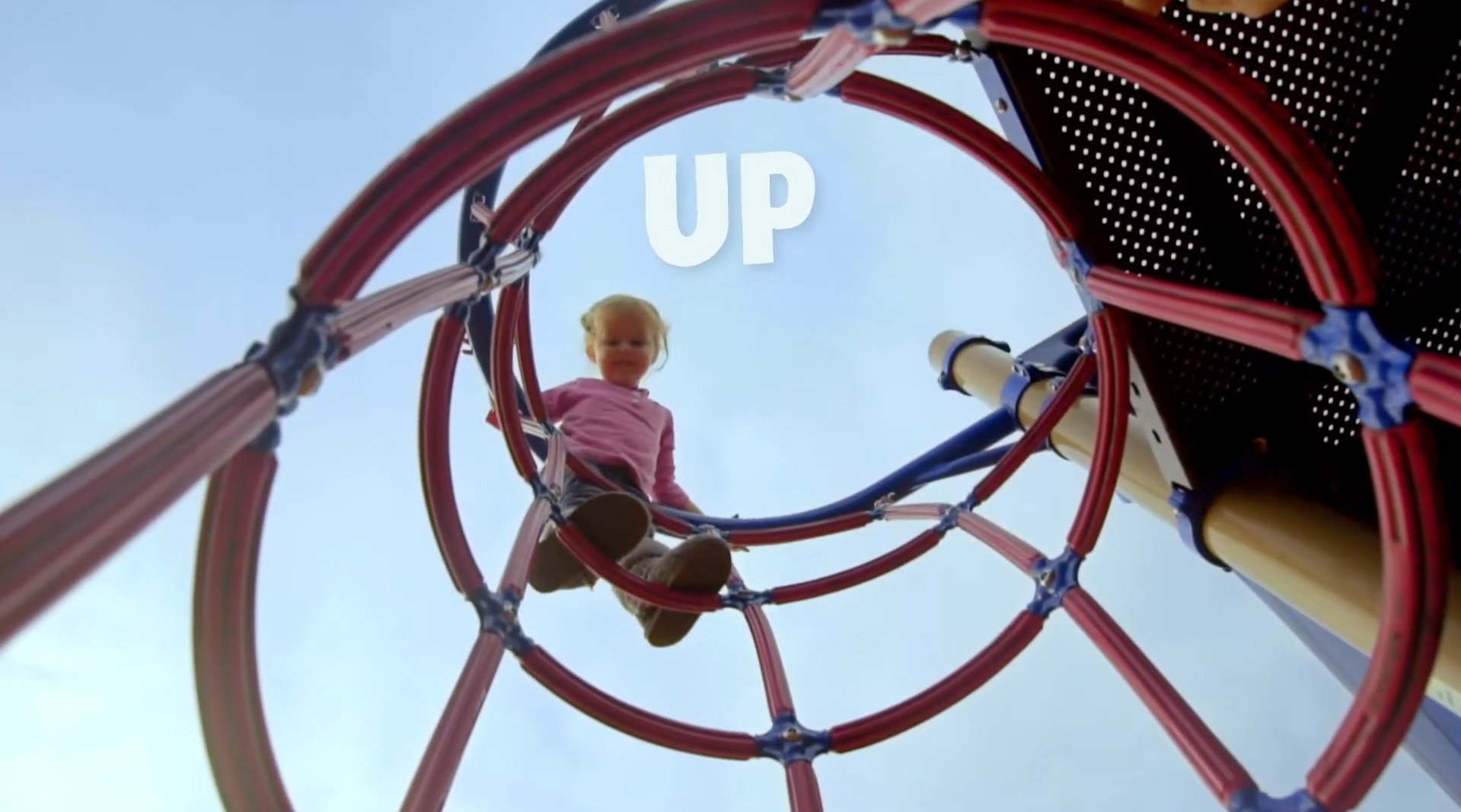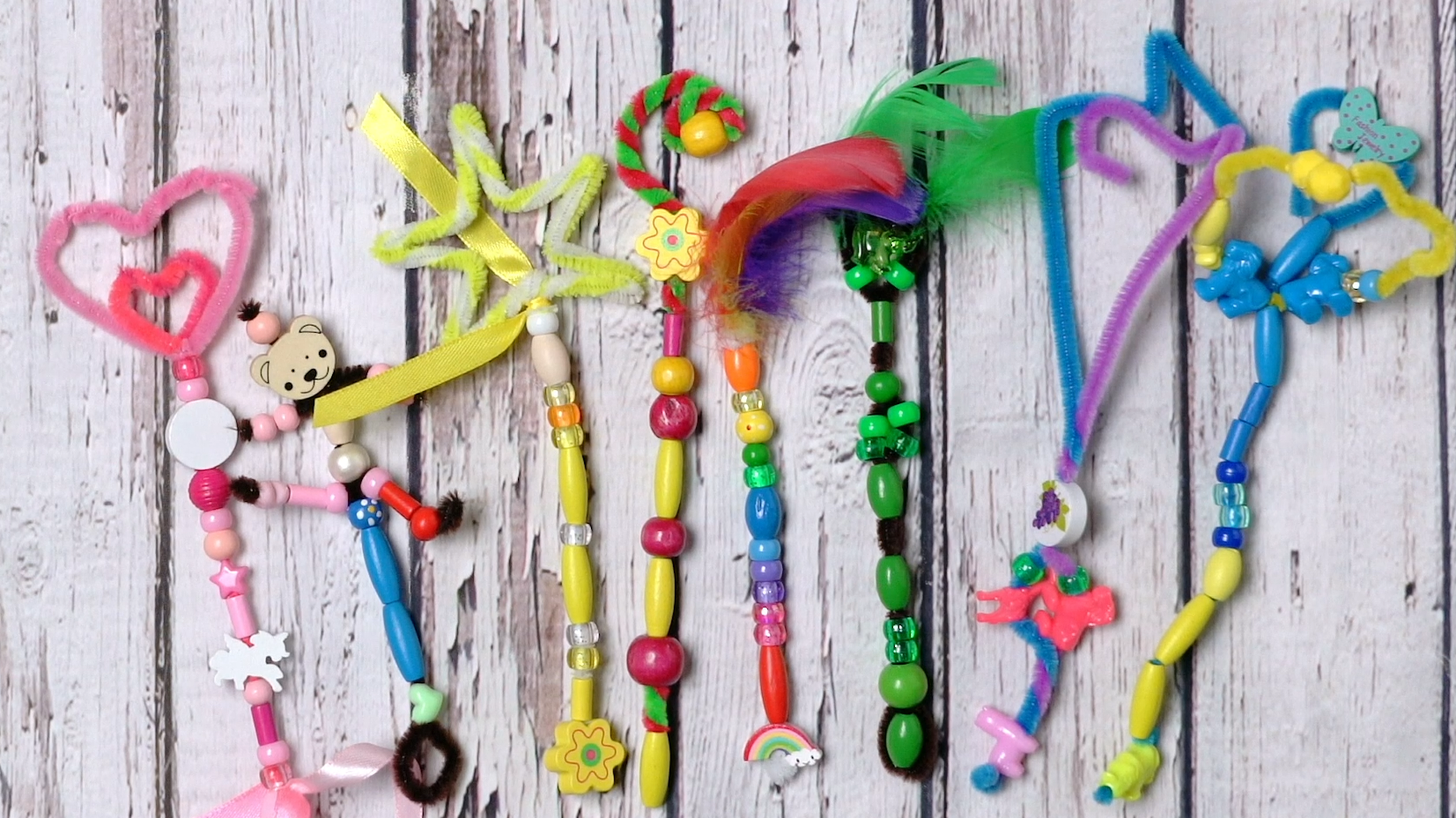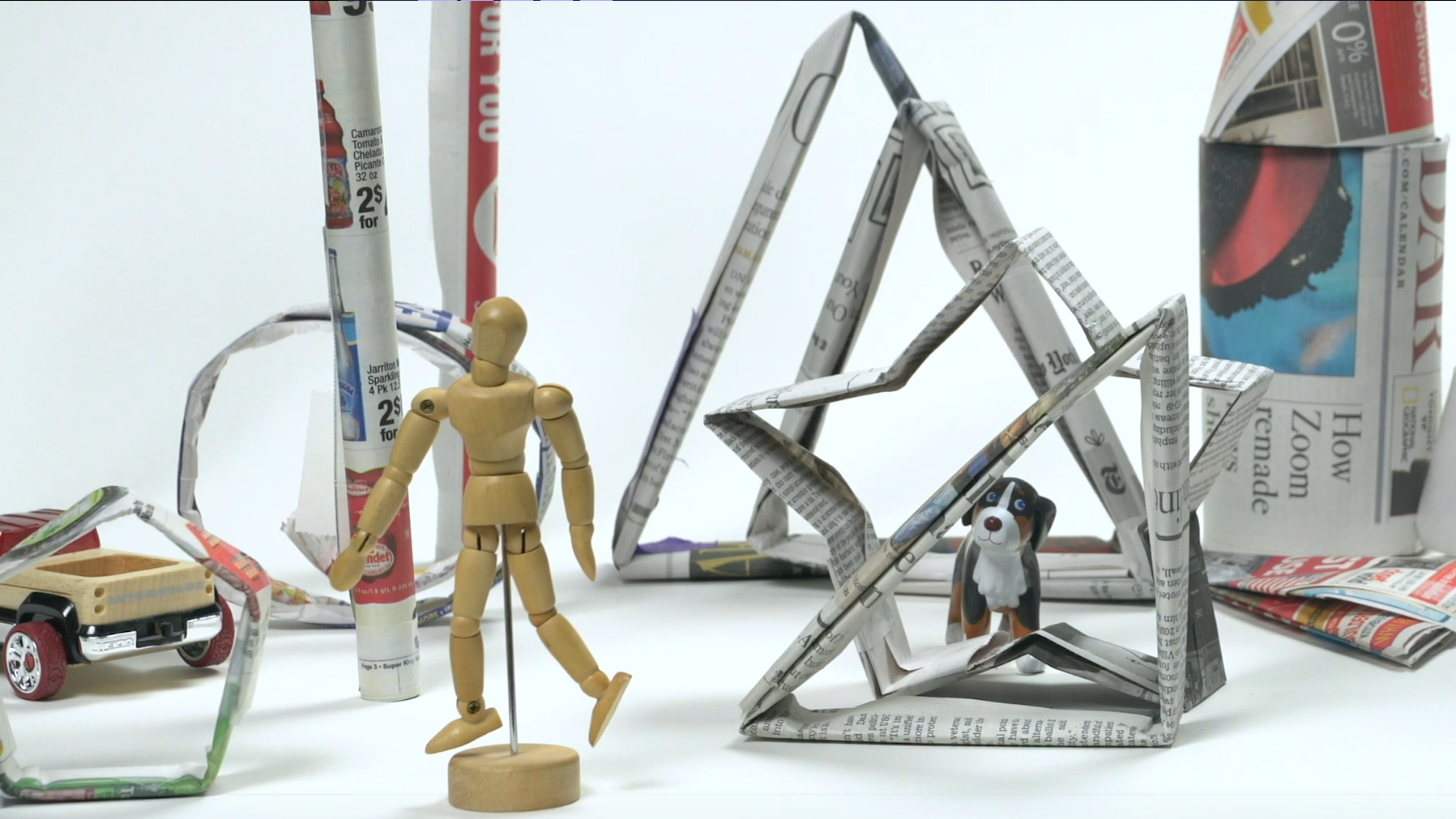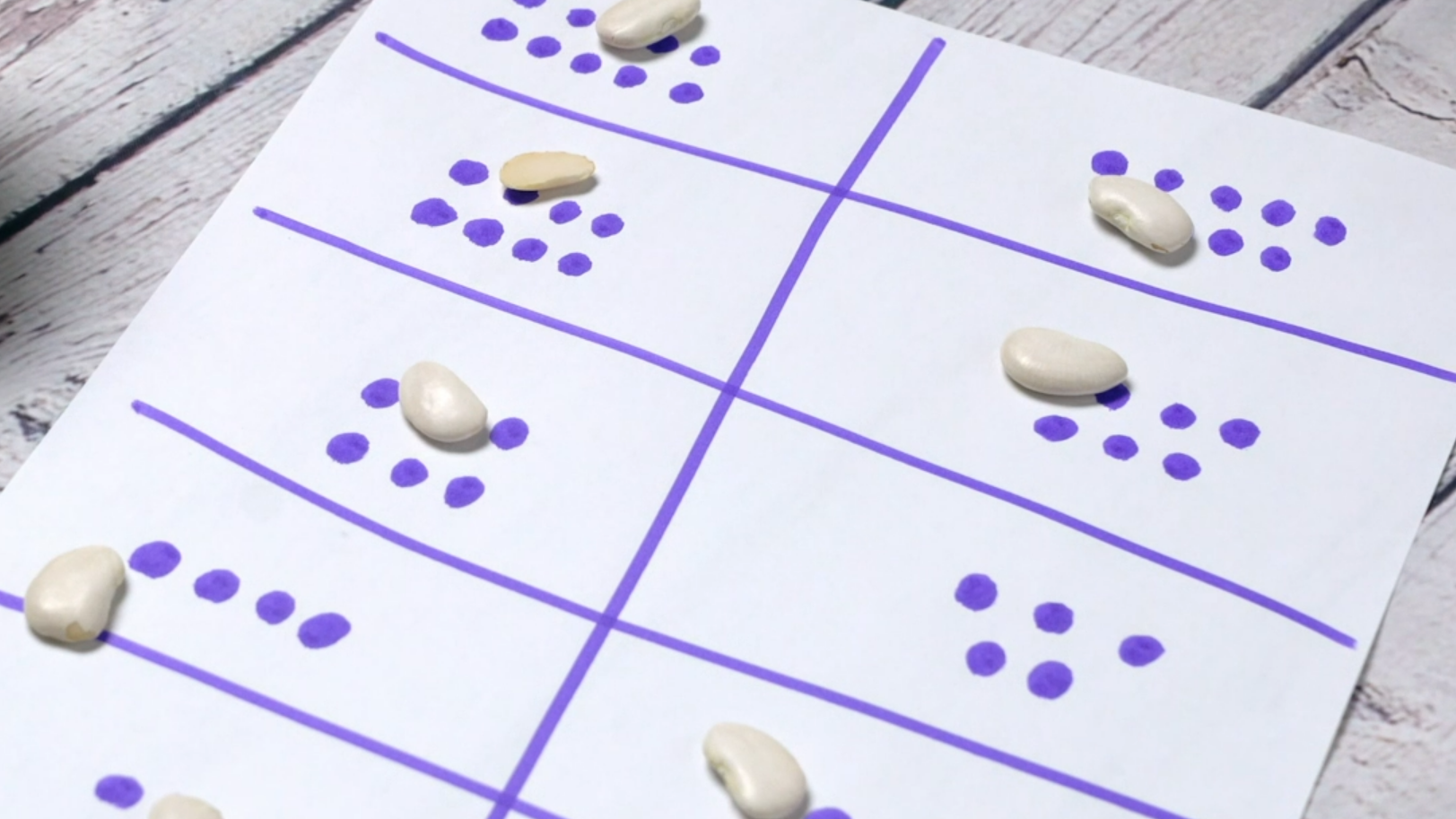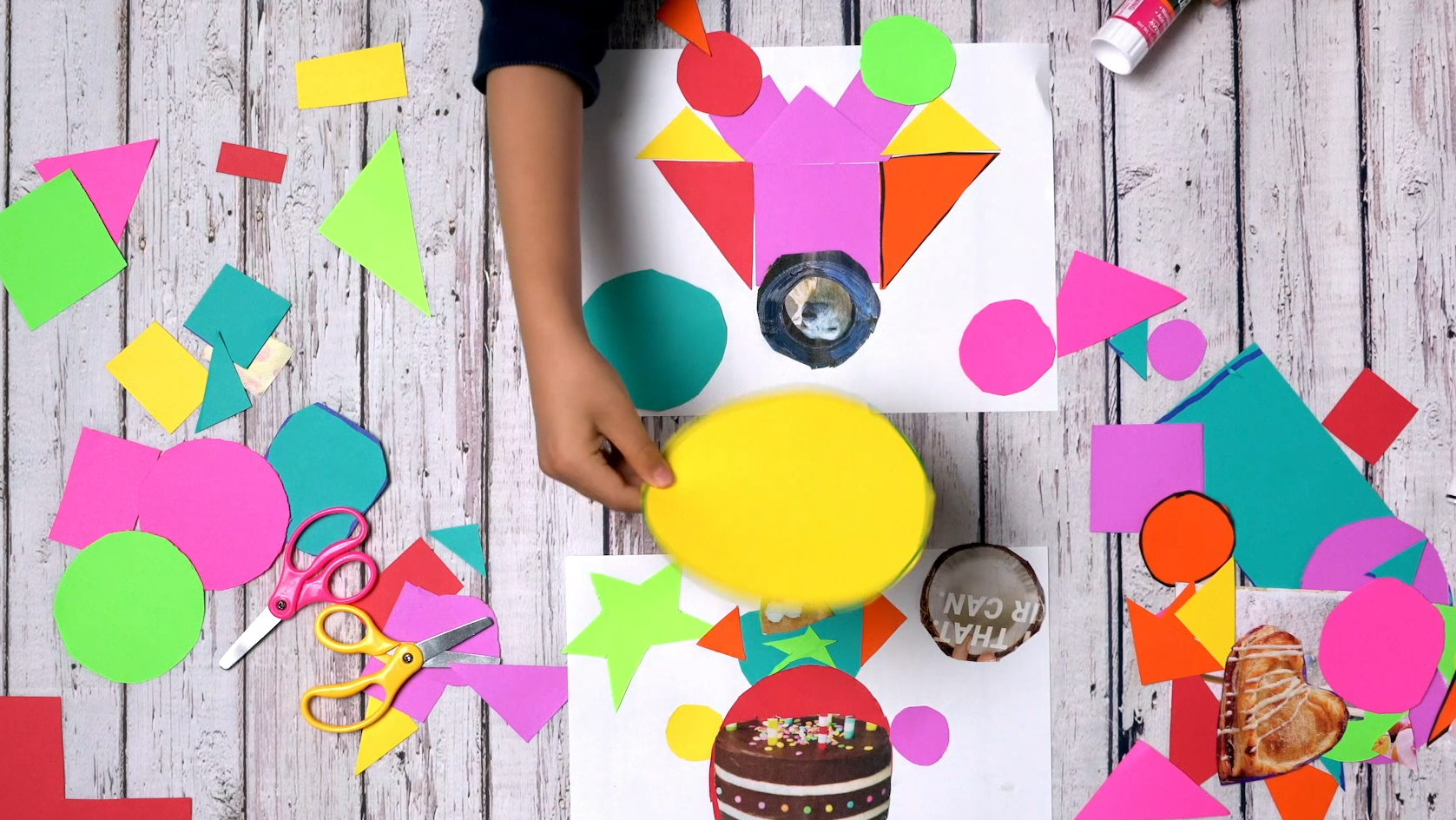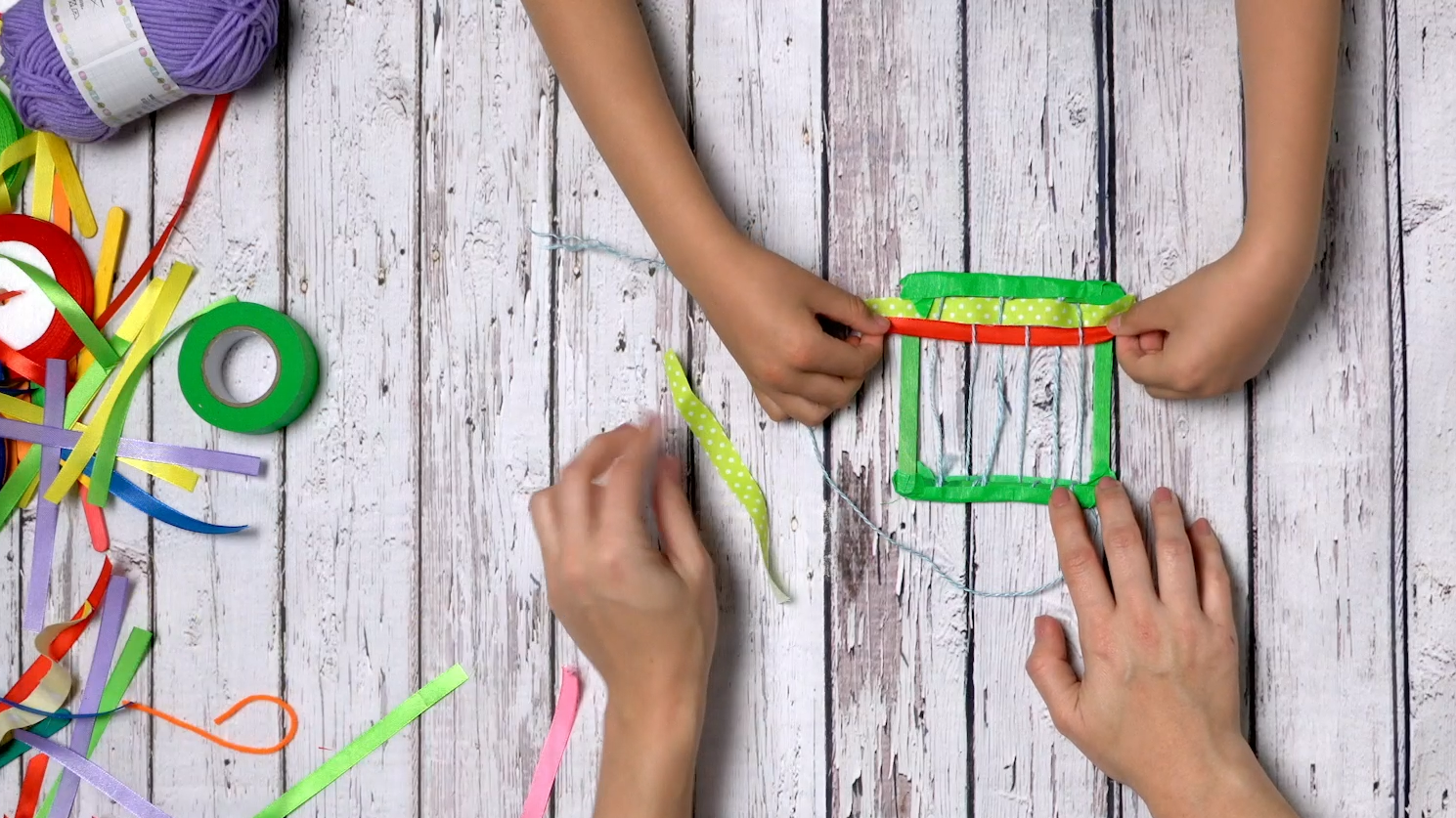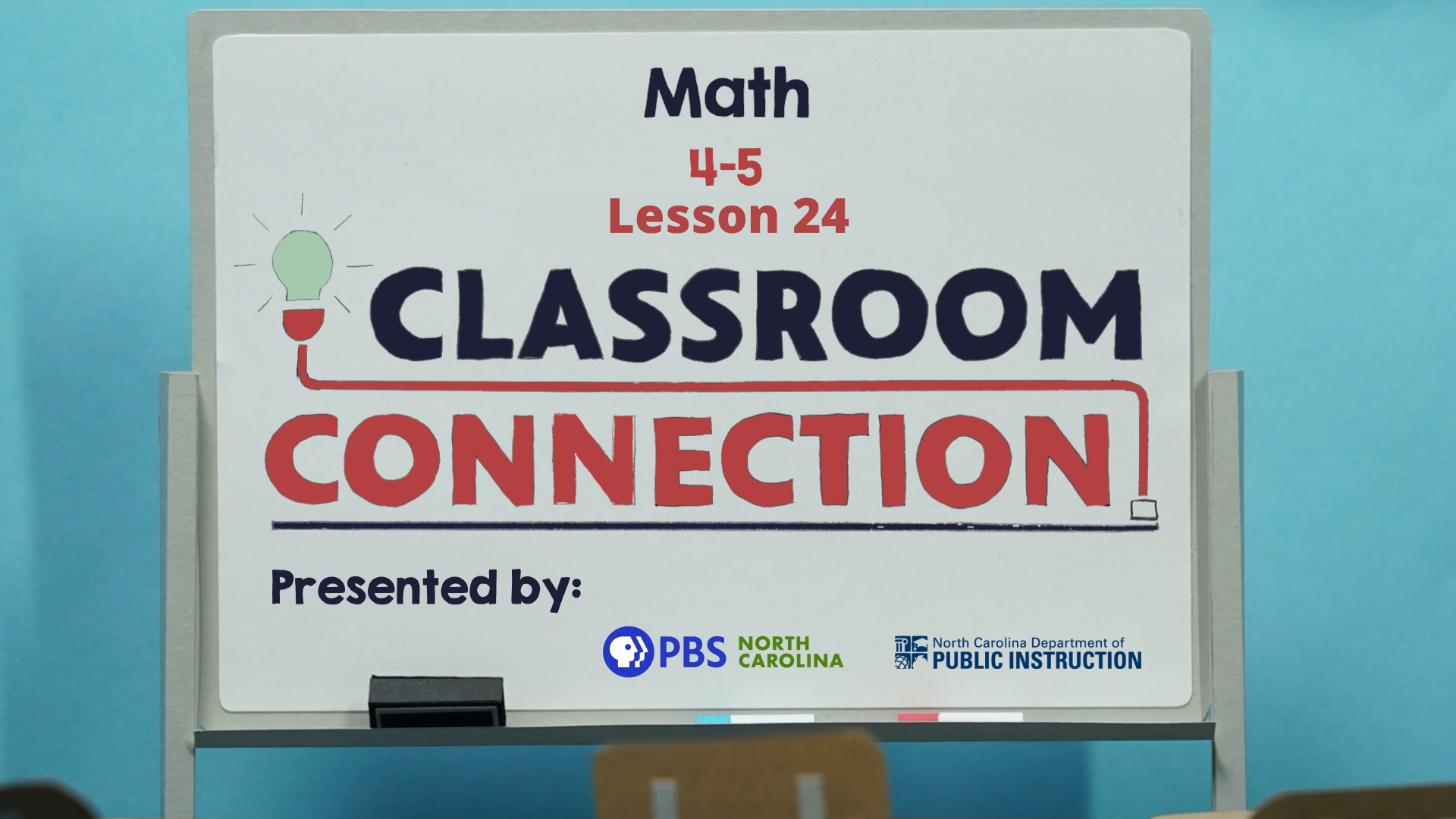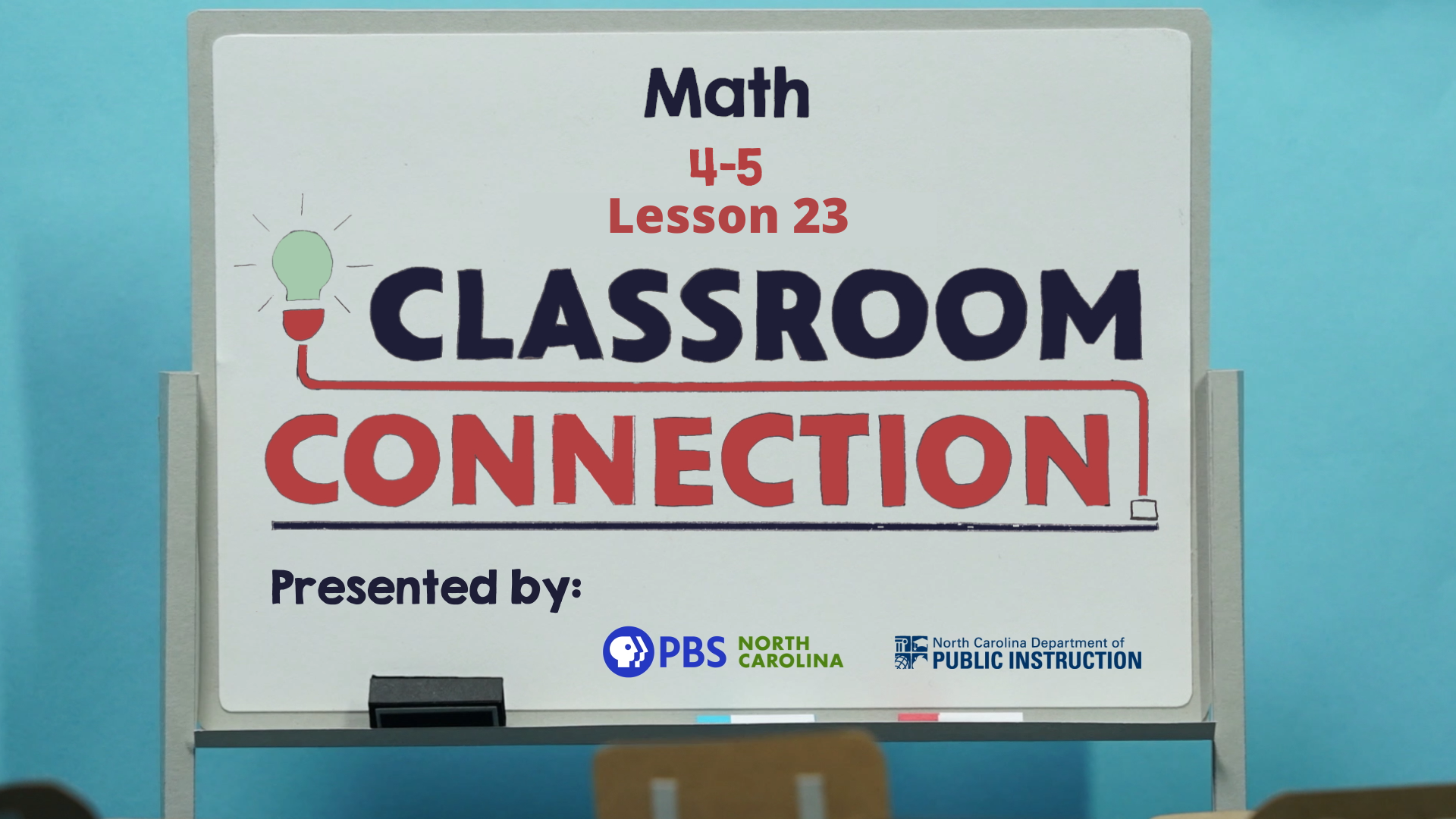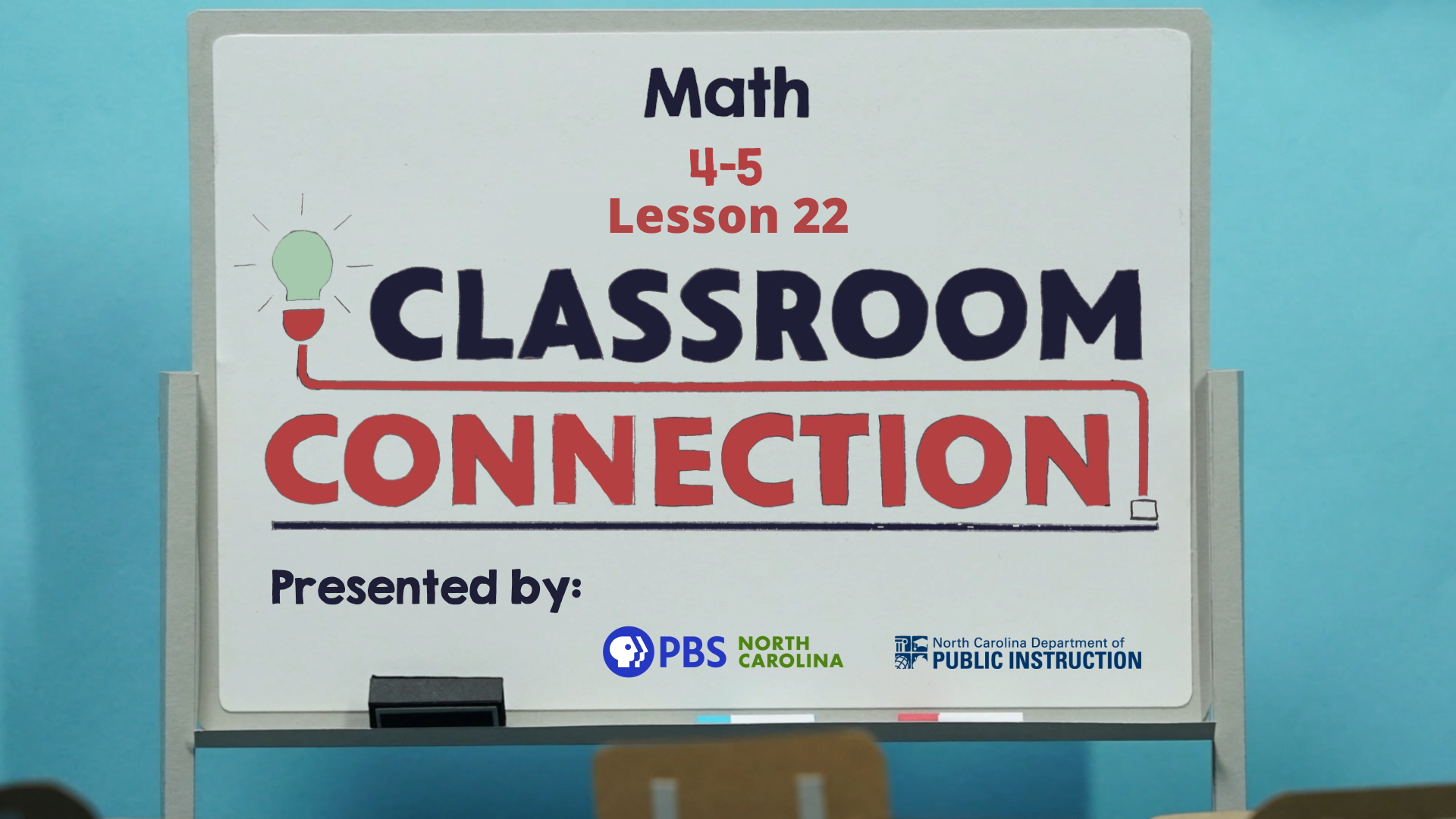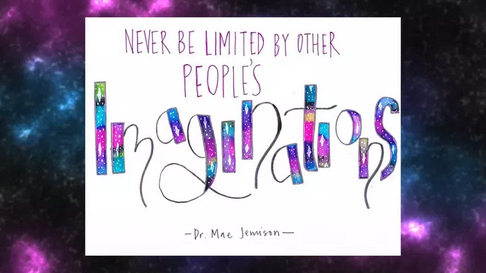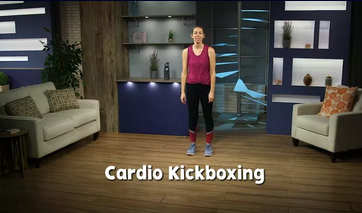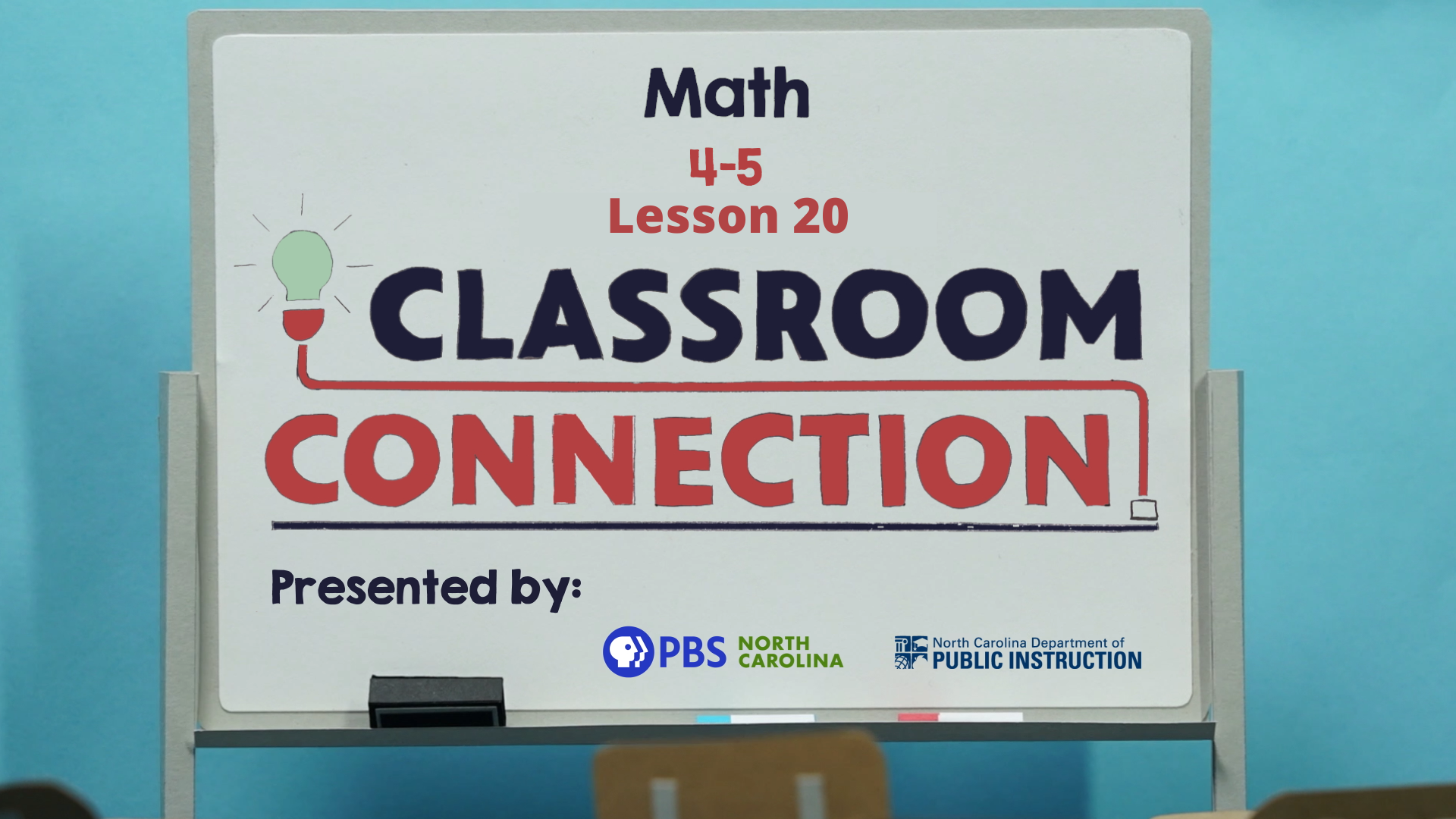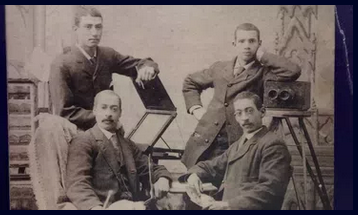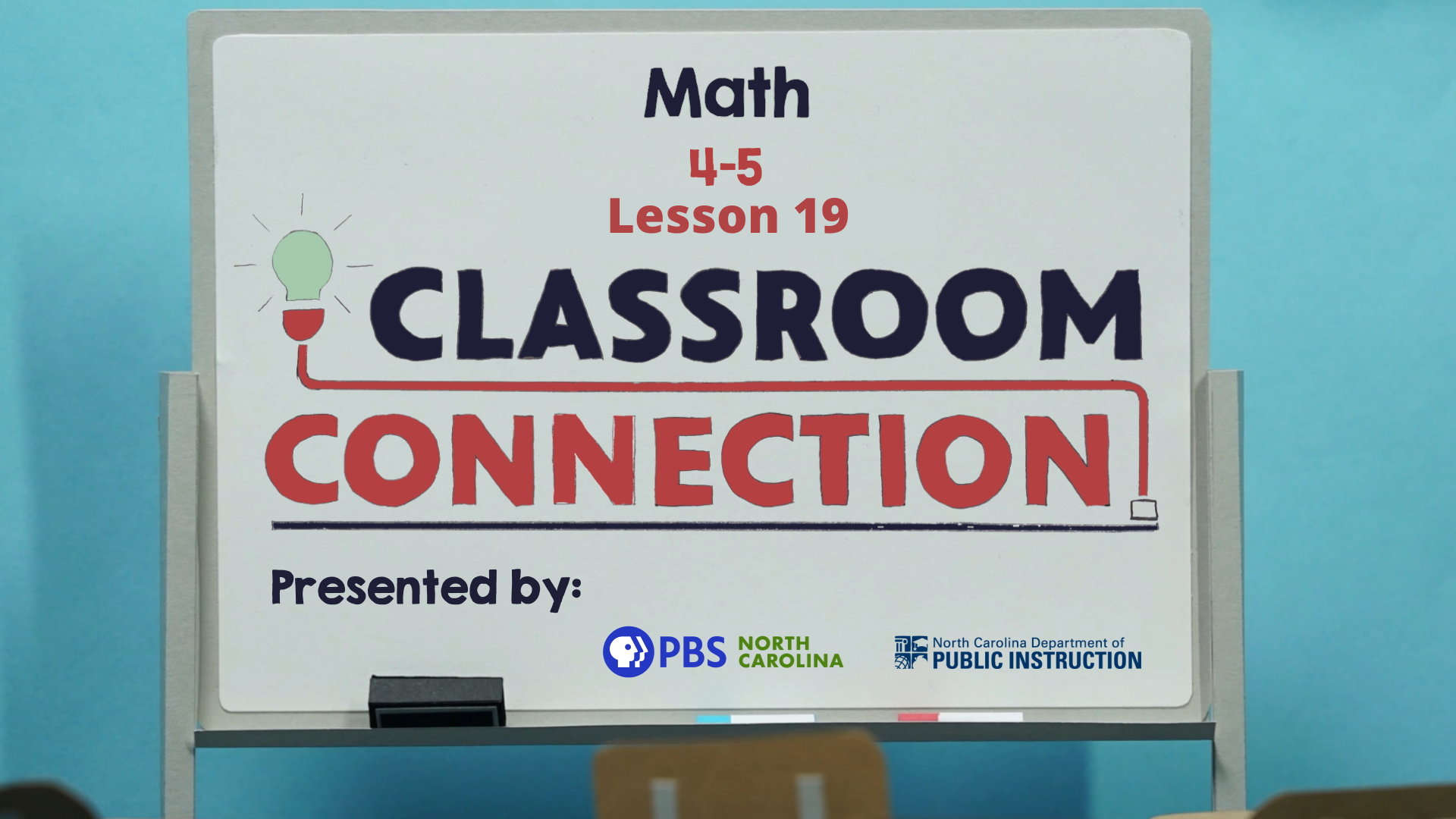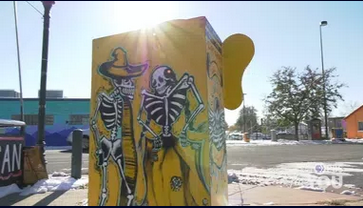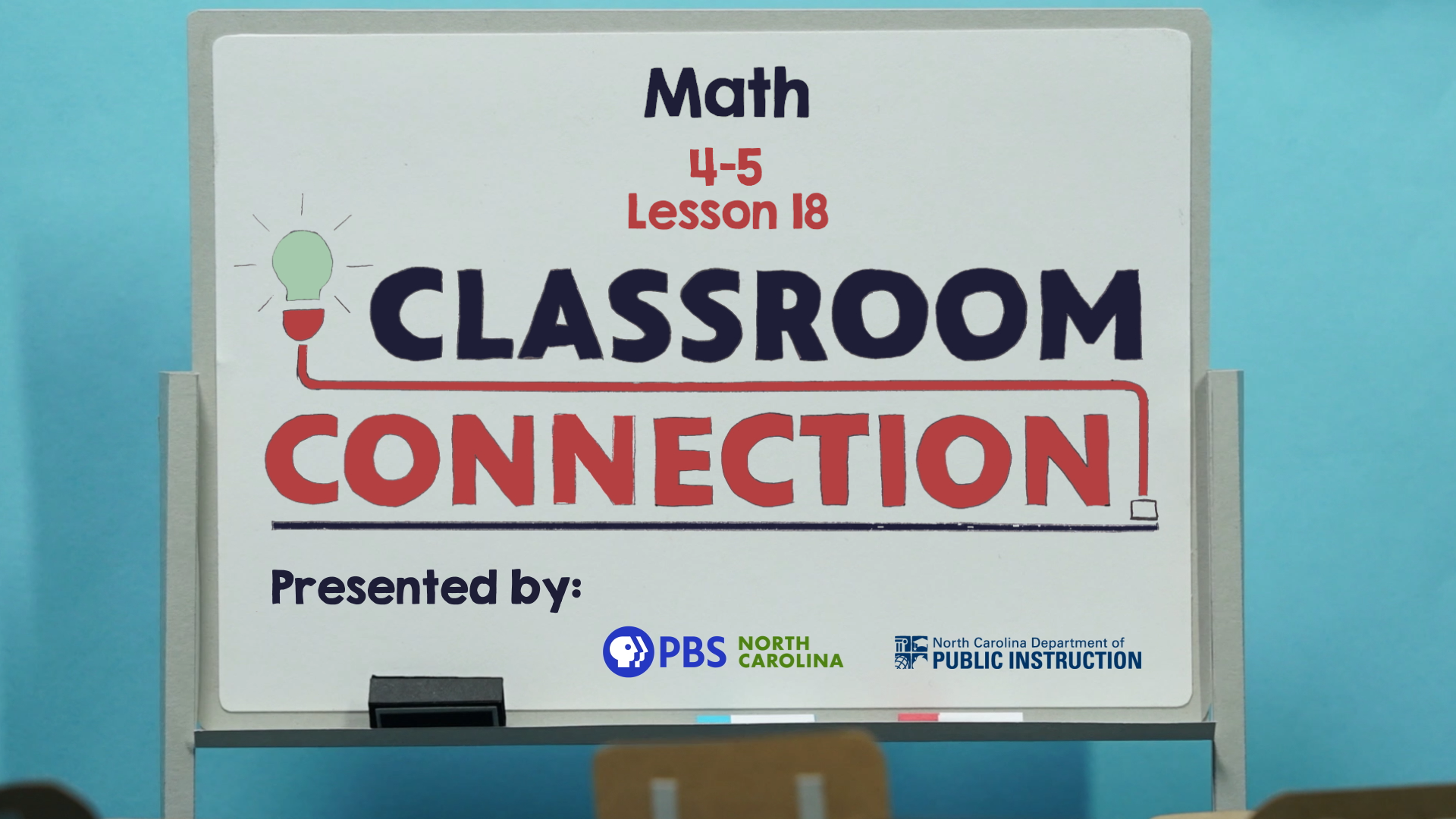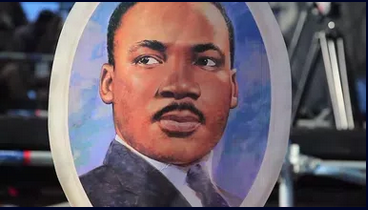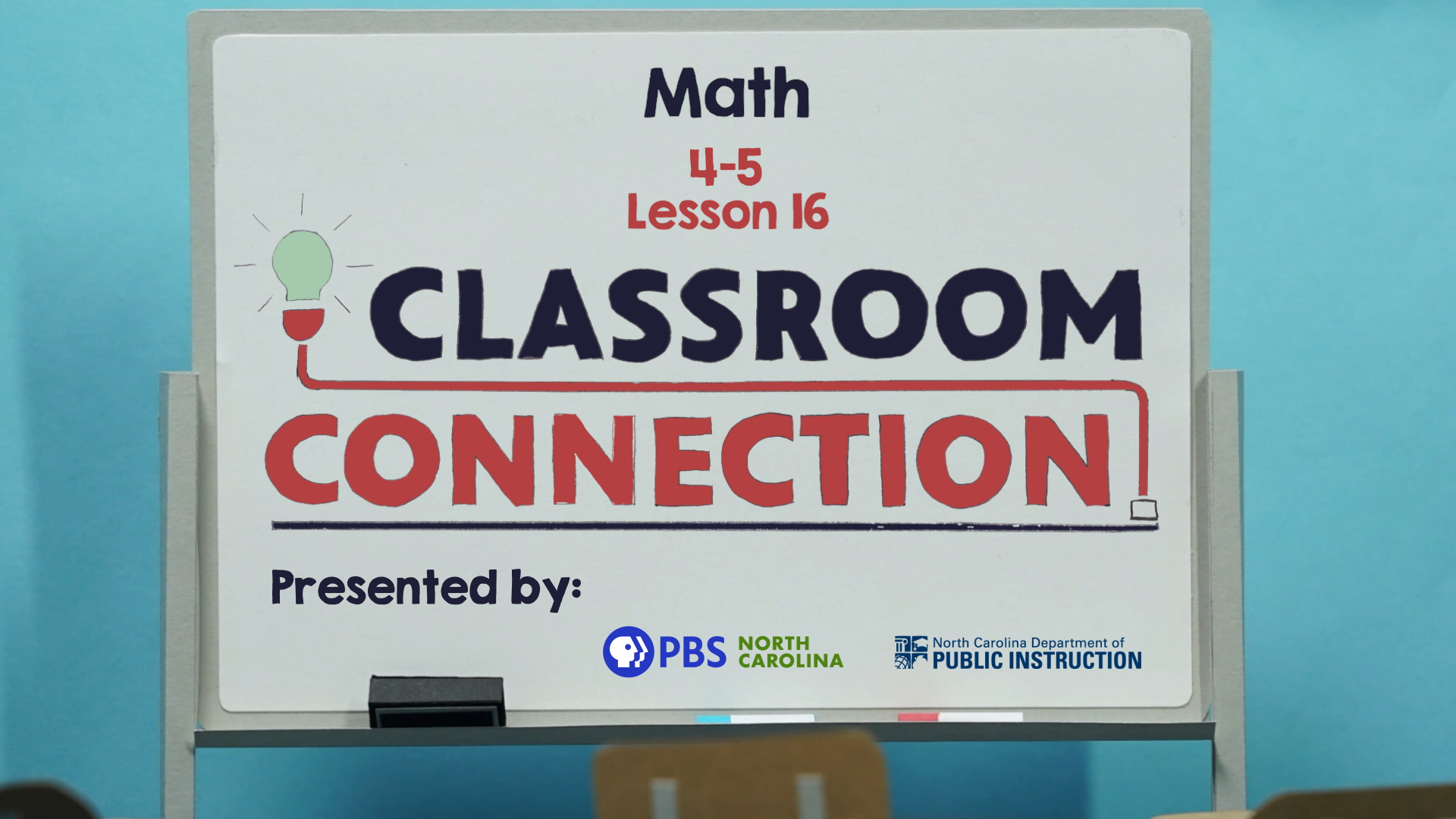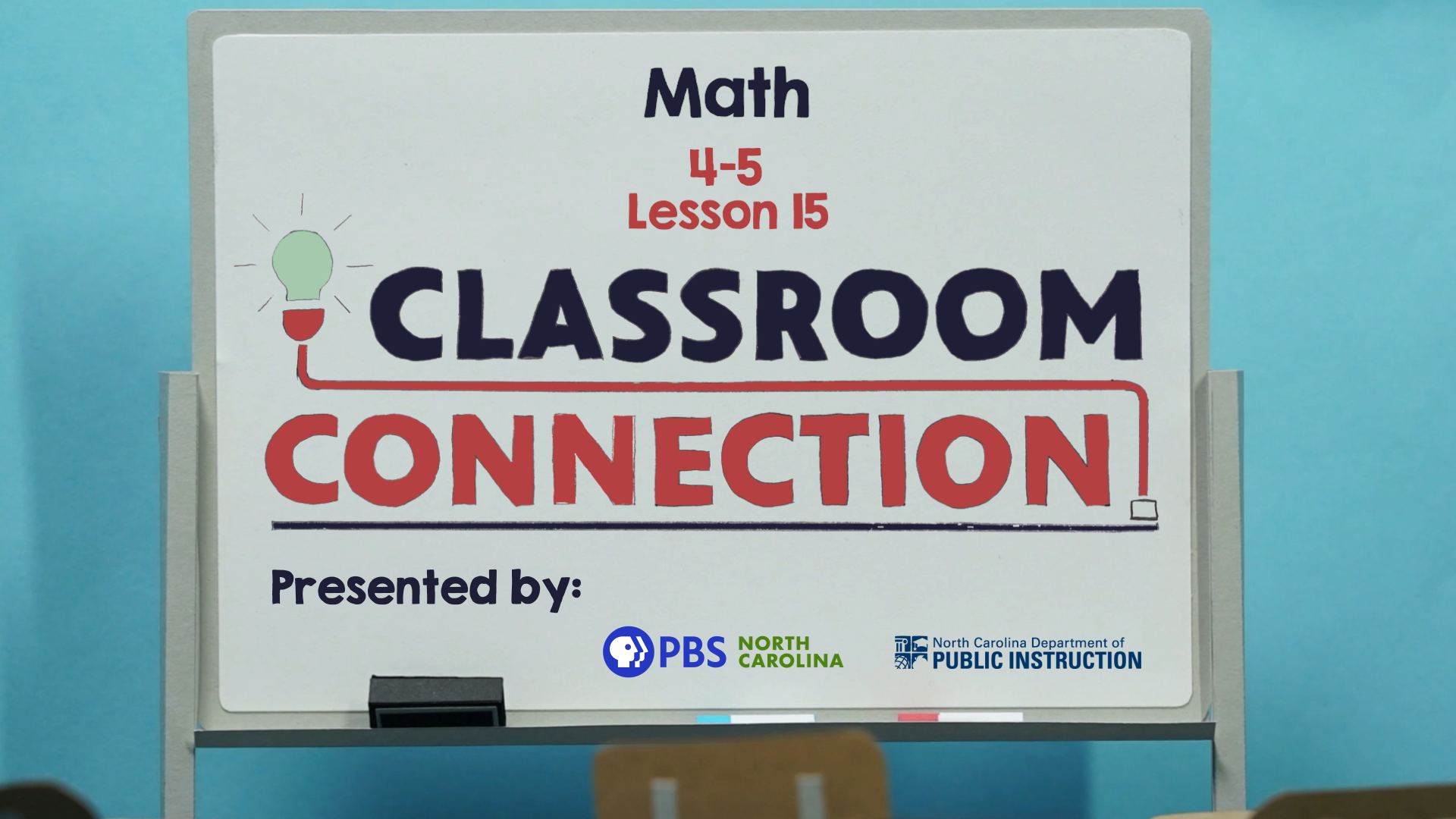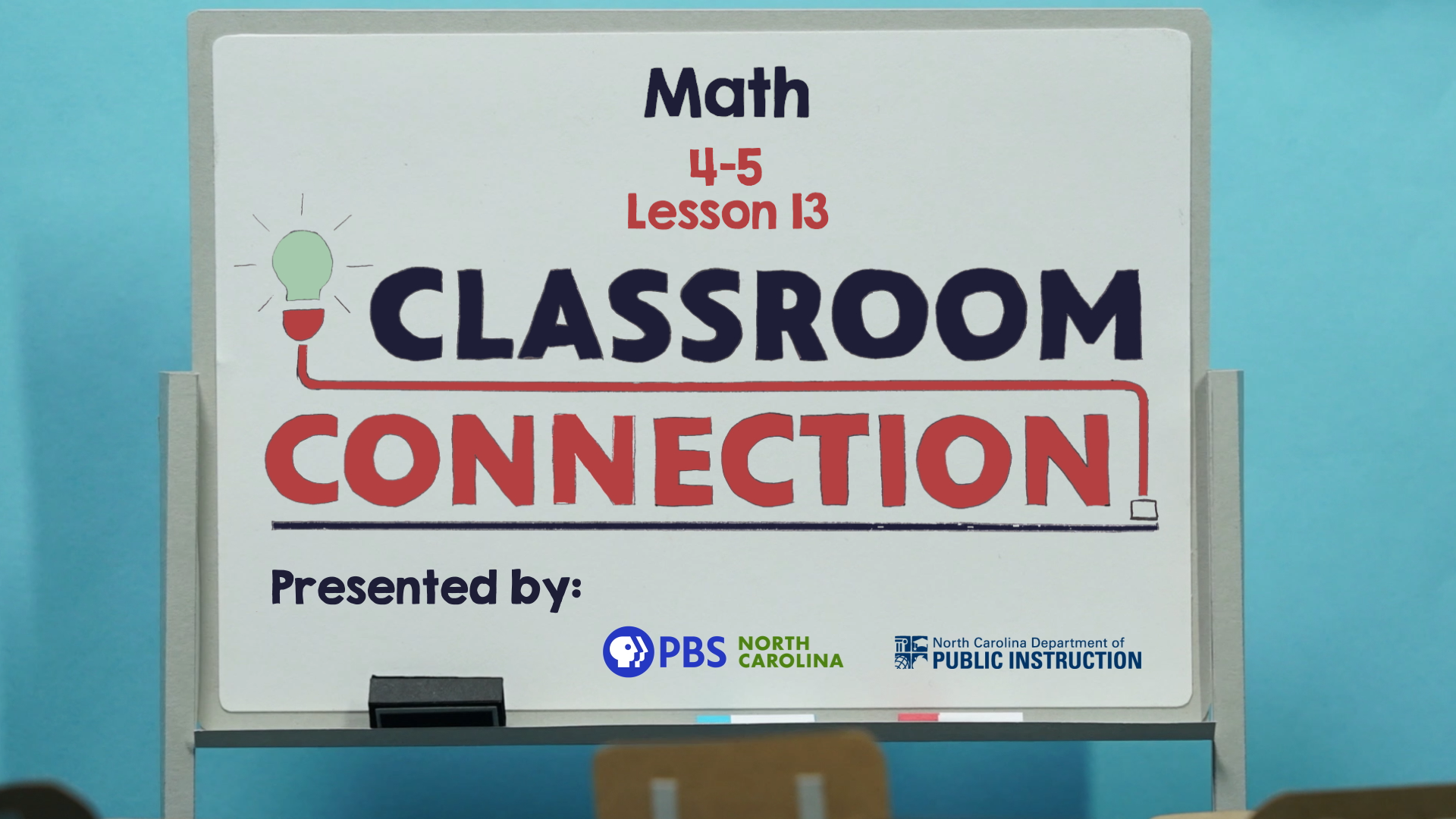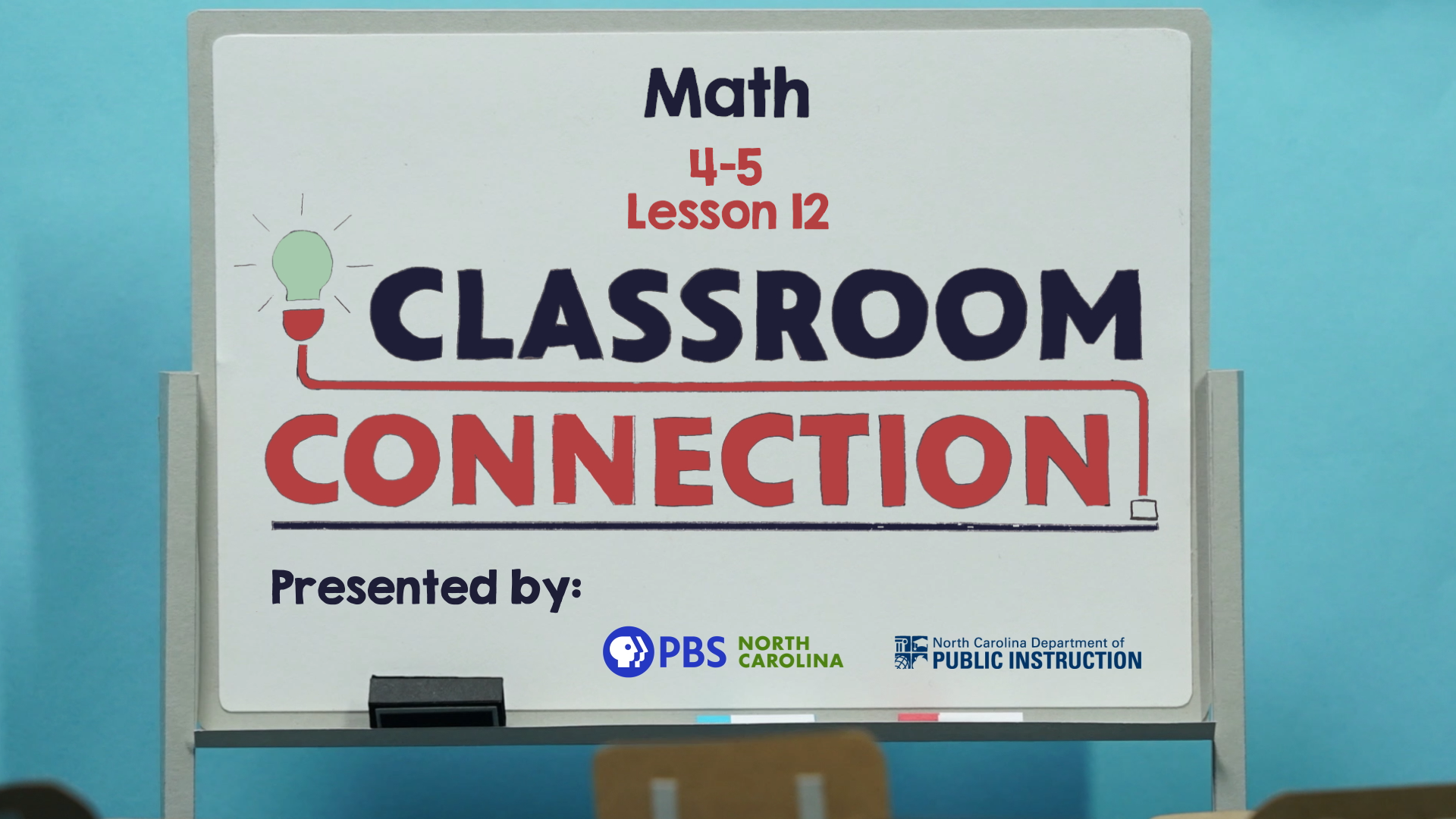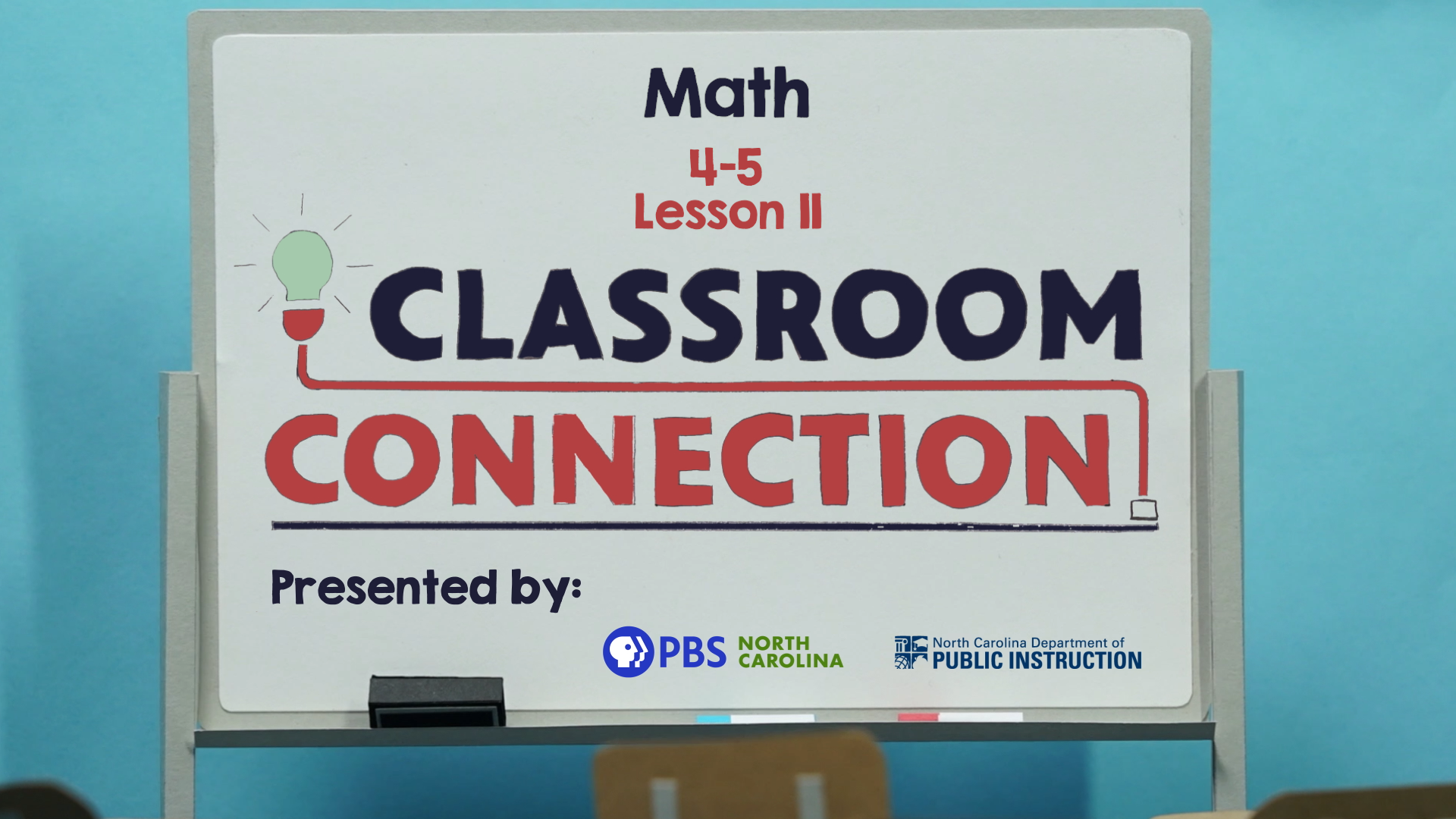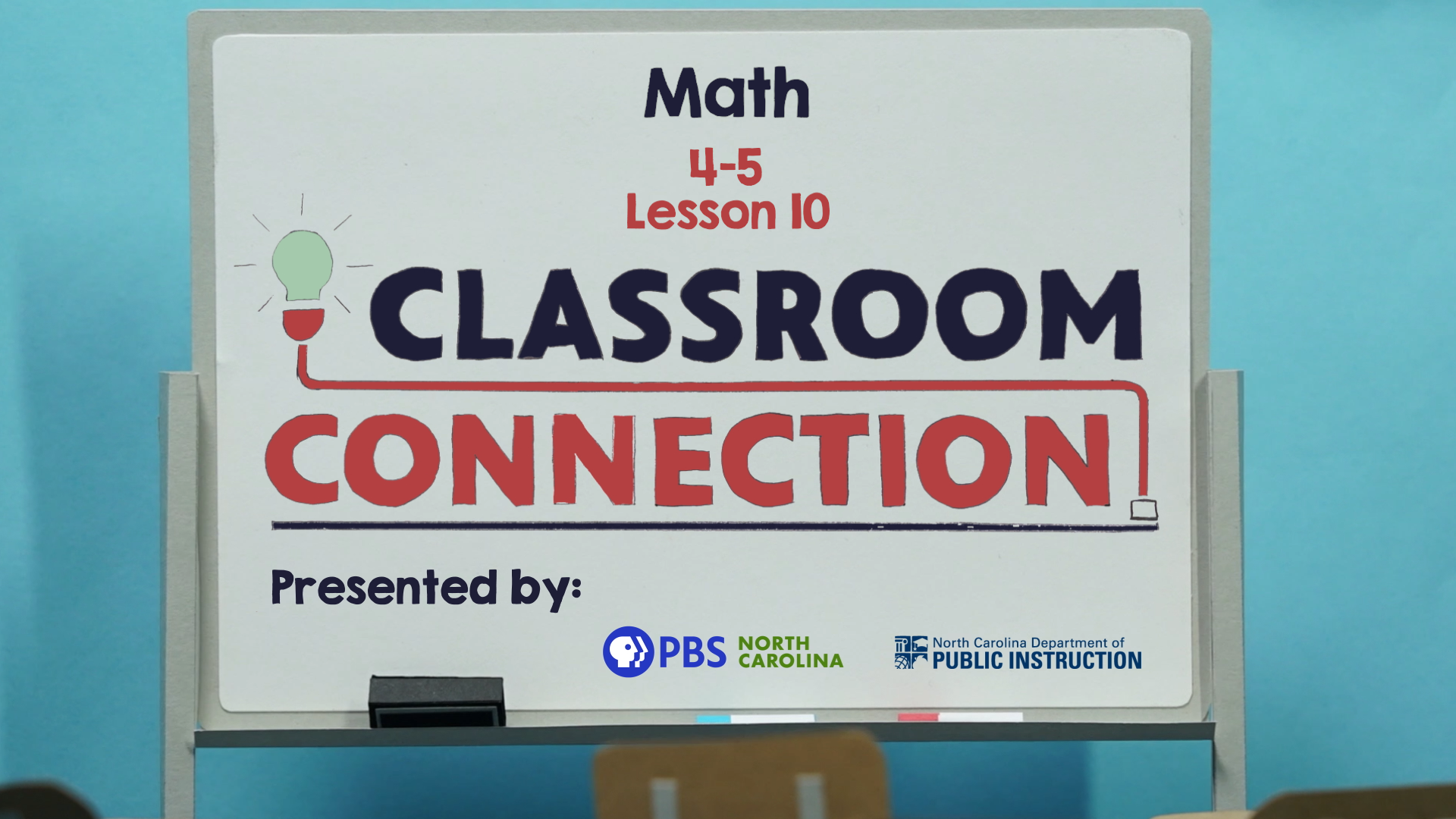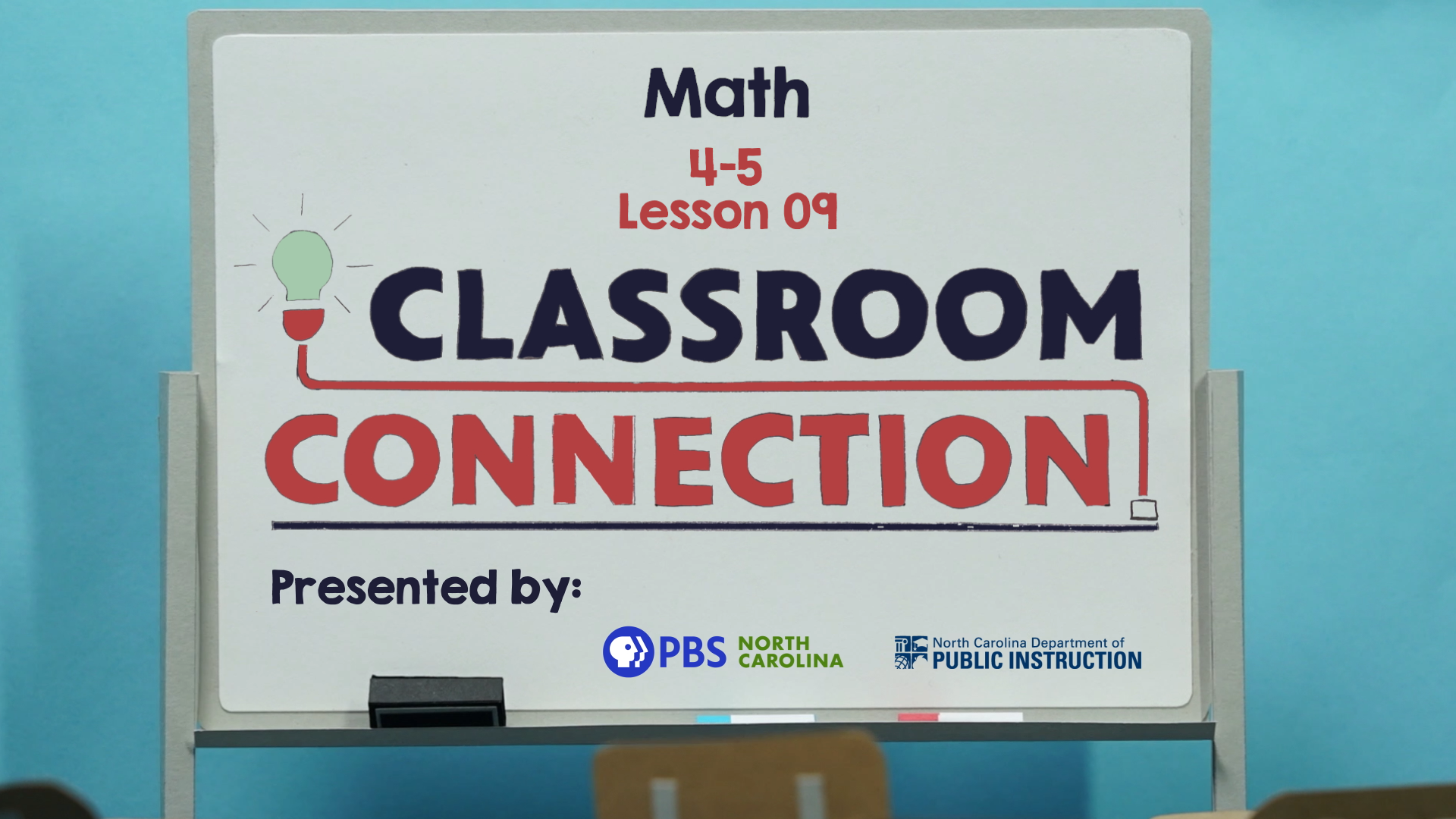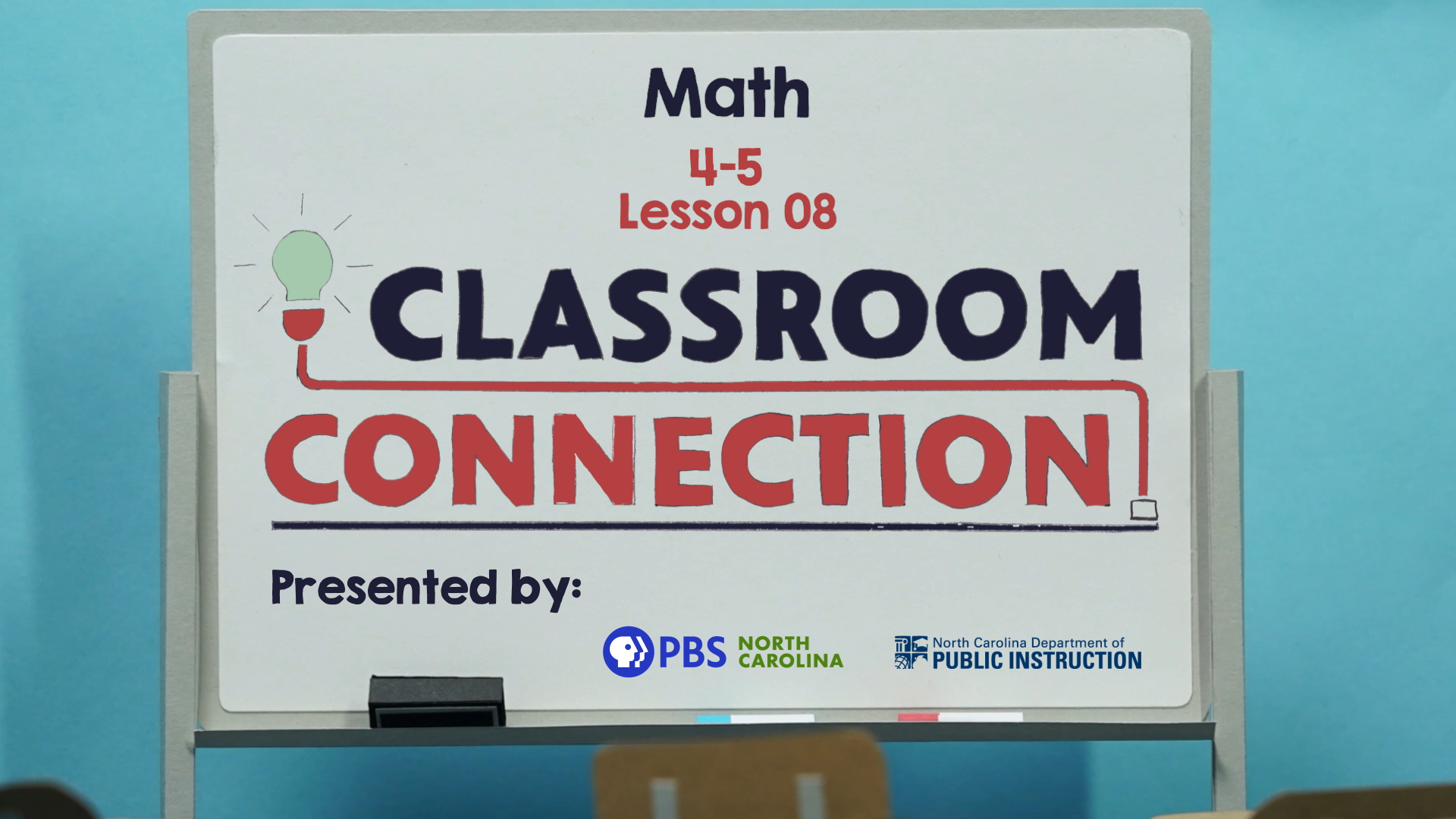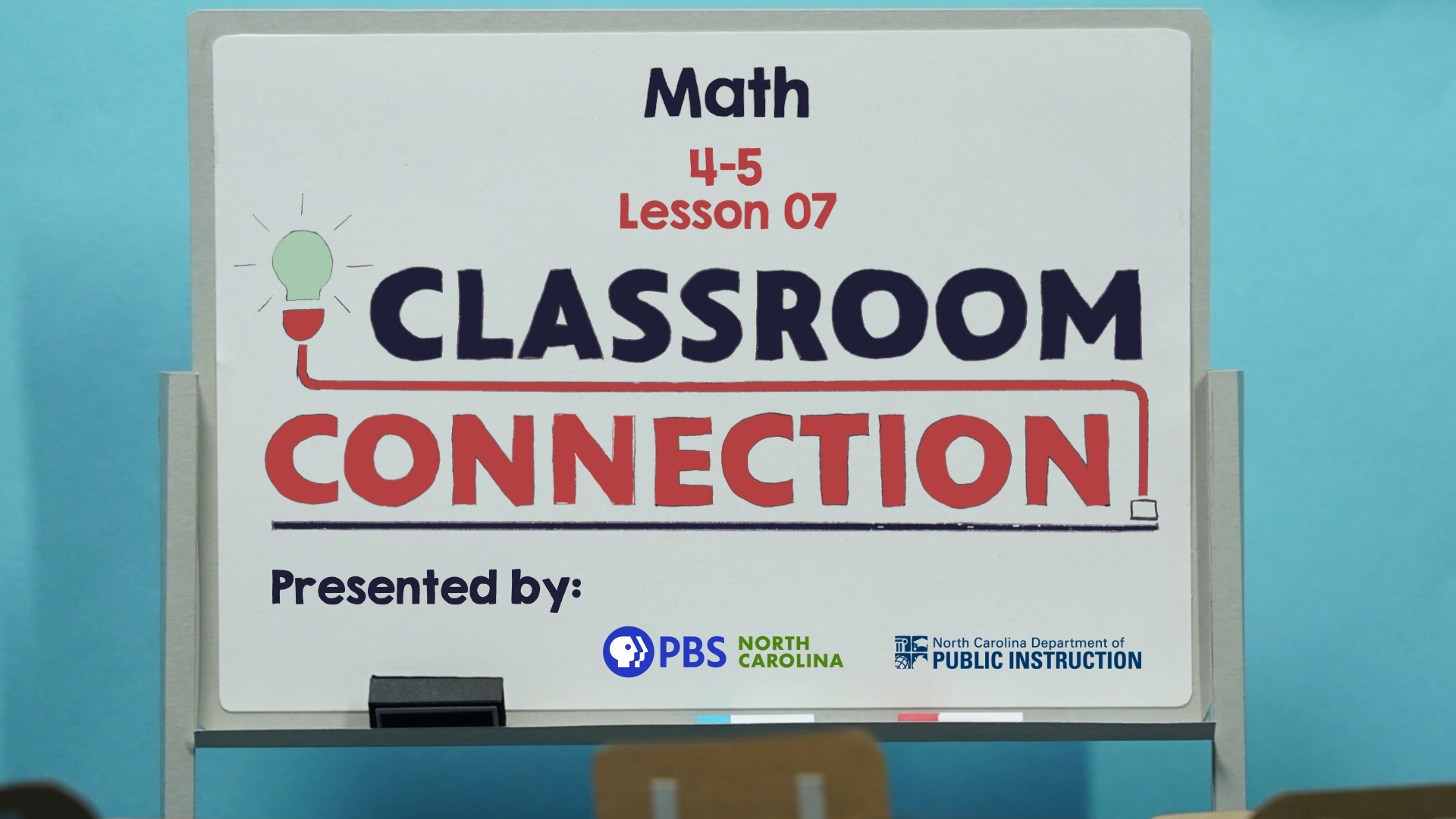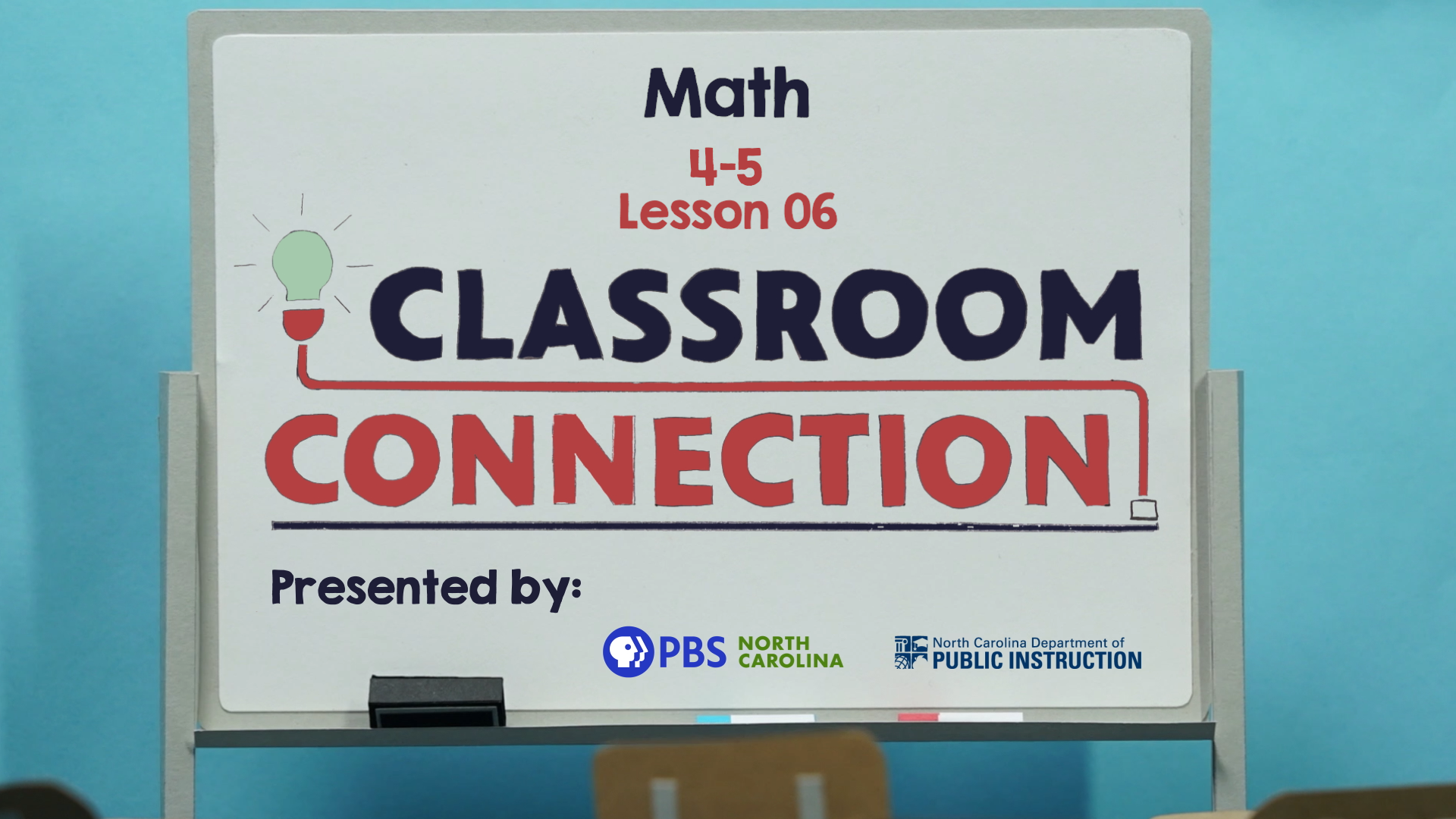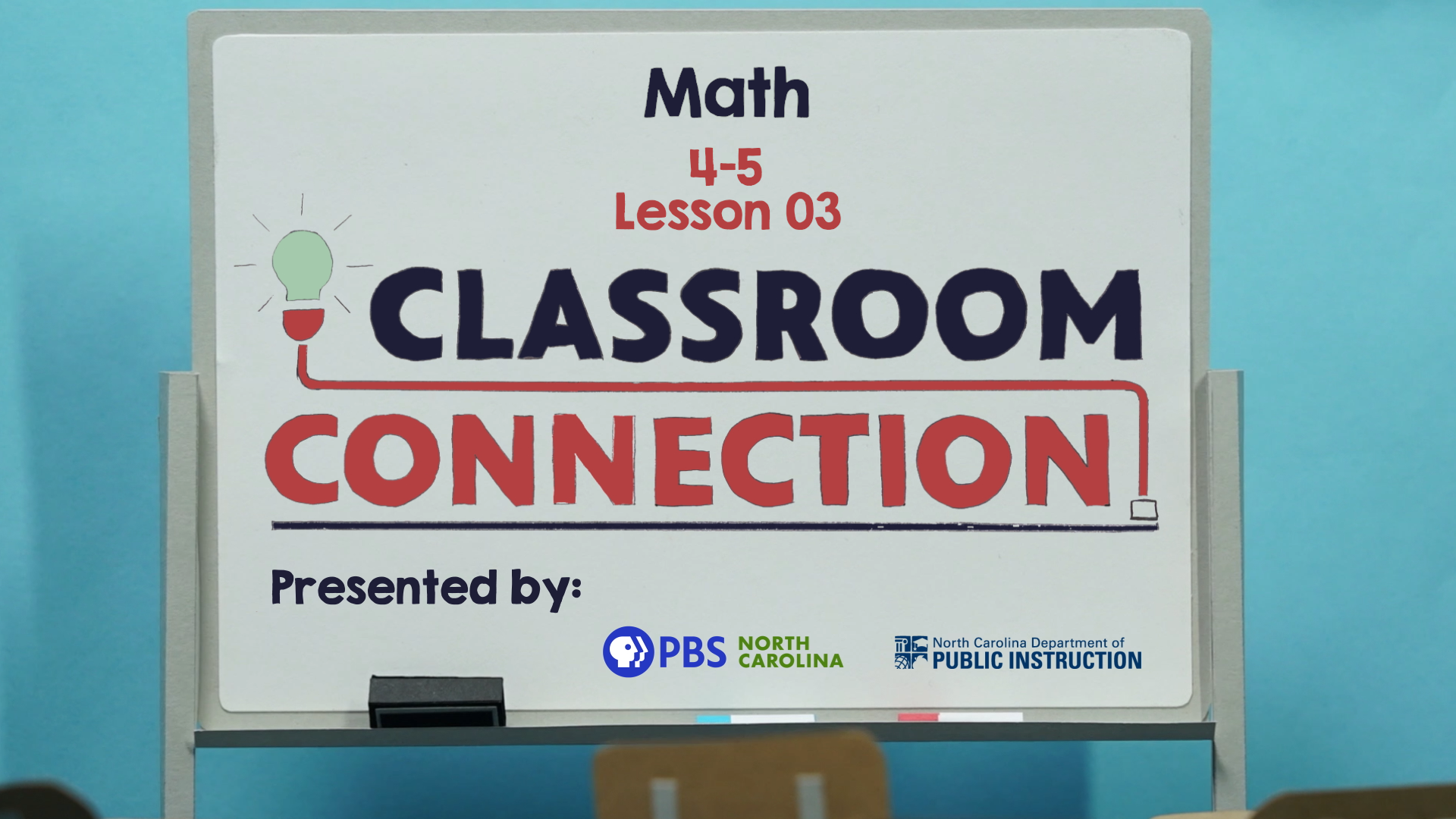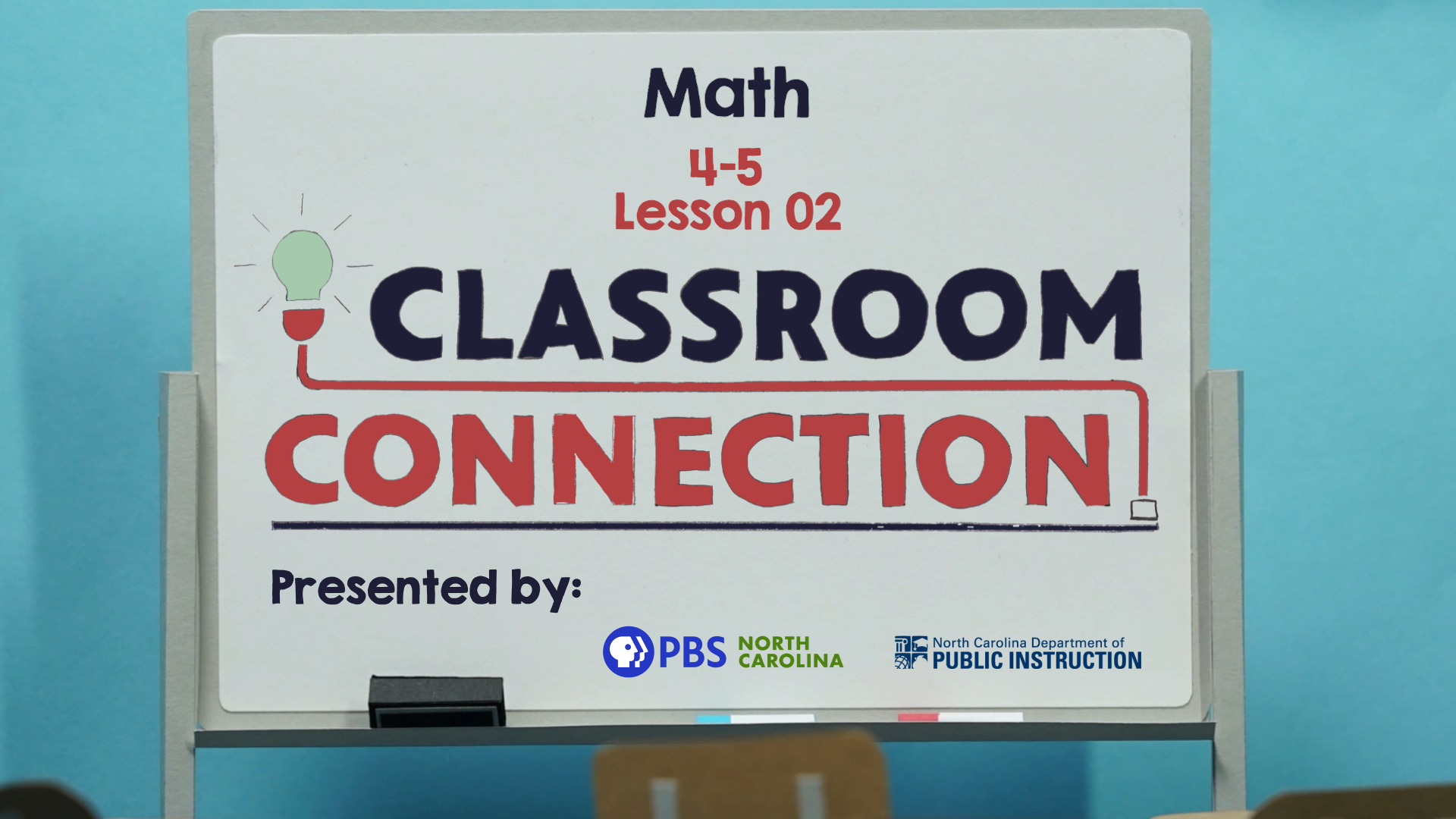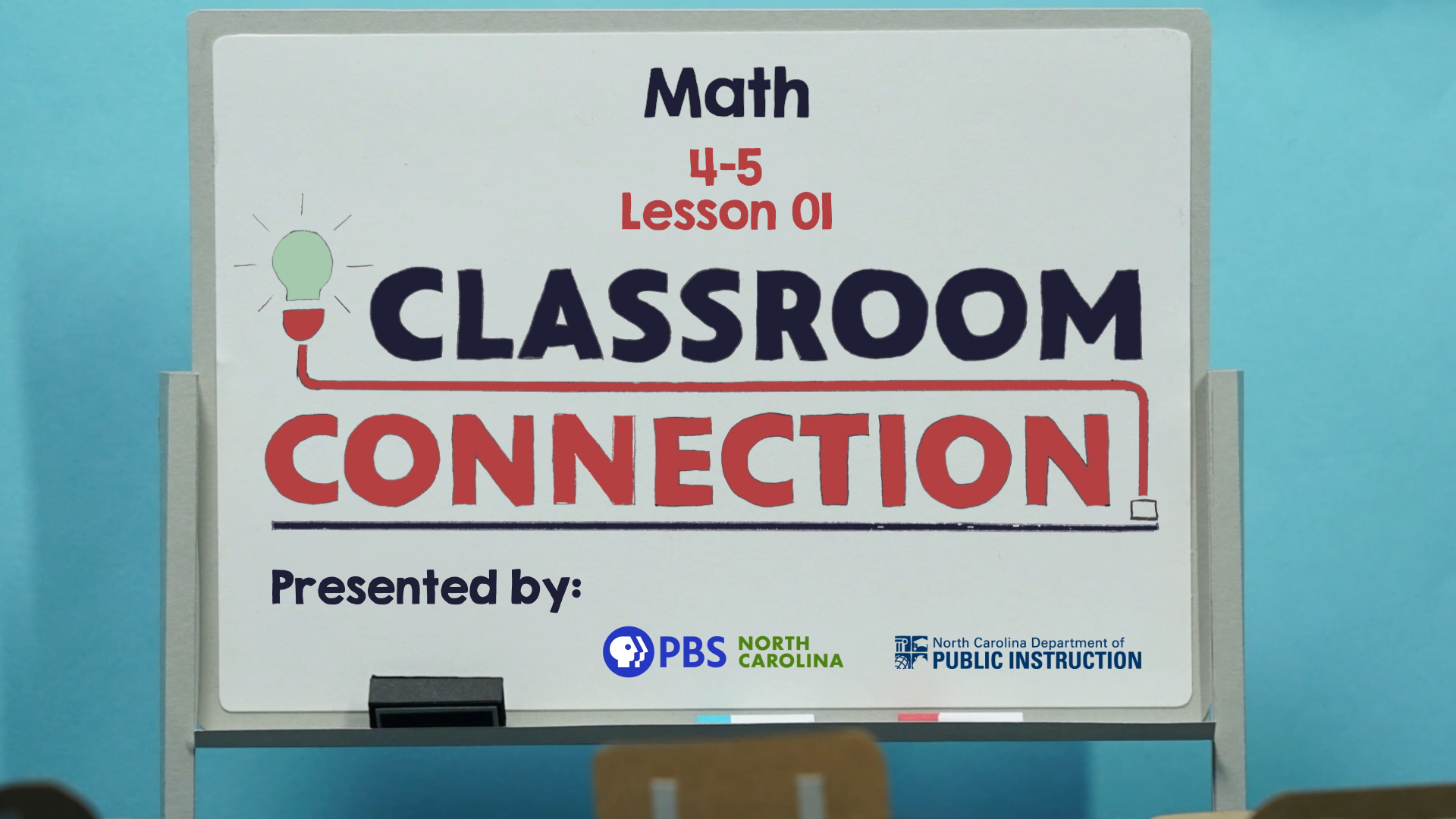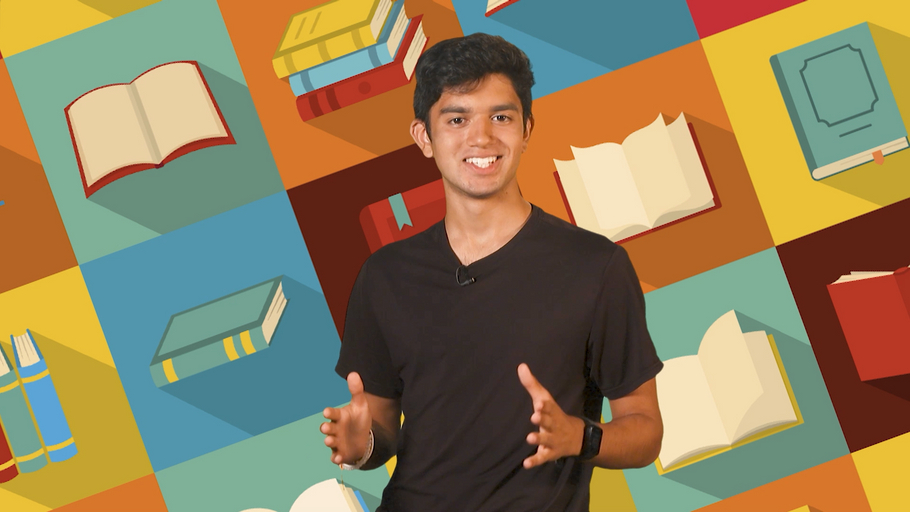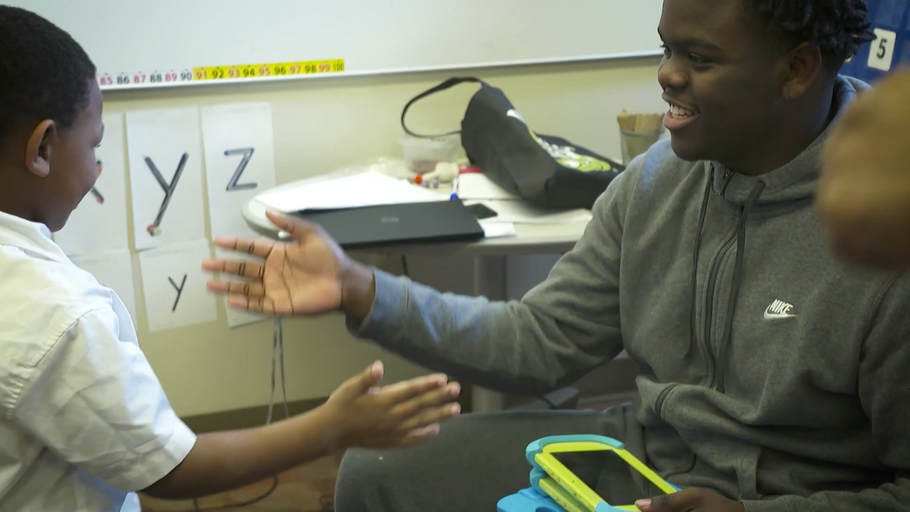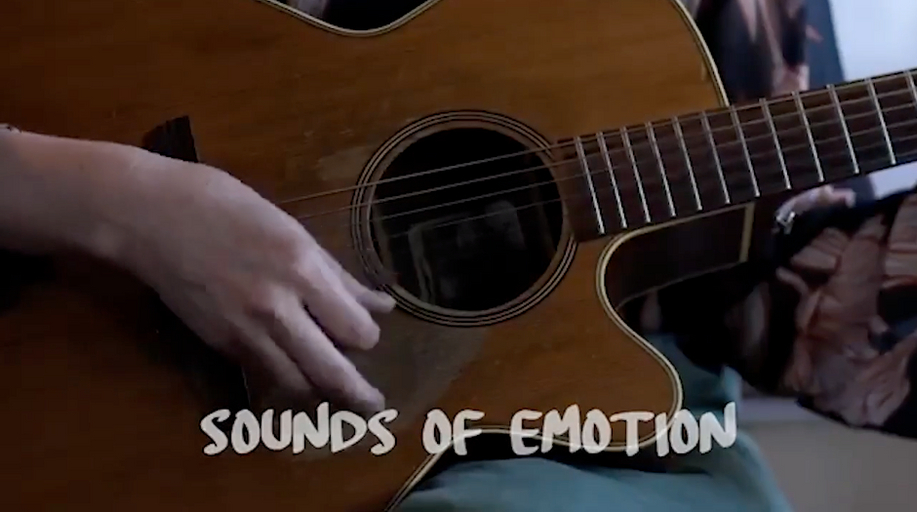Grades
Shows
Trusted tools that help families with children ages 2-5 uncover the joy of math in everyday experiences.
Lesson 4
Have you ever heard of time capsules? Because of how architects have designed the world we live in, any building [...]
Make a duck mask necklace and quack along as we count and solve basic math equations.
Learn how children can sort, collect, and group objects they see in the real-world A simple chore, like laundry, can be an opportunity to discuss math with your kids.
Discover how children learn to count and how you, as a family member or caregiver of a young learner, can help encourage their development. Then explore ways you can bring number sense into the home by recognizing opportunities to talk about math in everyday life, including while clearing the breakfast table.
Learn the patterns and rules used to help predict outcomes. Then, while preparing lunch, find patterns and predict what will come next.
Look at the world and identify shapes, while discussing the attributes that define them. Then continue the conversation at home while putting groceries away.
Kids must develop a spatial sense to communicate with others about the world around them. To do so, it’s important that families use vocabulary related to position and location as often as possible around young learners.
In this step-by-step activity video, we create magical bead wands while learning to sort and collect with your child. This video is included as part of PBS SoCal’s Family Math initiative, which provides math tools and support for families of young learners.
In this step-by-step activity video, which requires little other than some newspaper and tape, we learn about the vocabulary of location and position (over, under, in front of and behind). Practicing these skills helps your children develop a spatial sense of objects in relation to other objects in a 3D space.
In this step-by-step activity video, we create a fun Bingo-style board game while helping your child develop number and counting skills. This video is included as part of PBS SoCal’s Family Math initiative, which provides math tools and support for families of young learners.
In this step-by-step activity video, we hunt through magazines and newspapers for shapes while talking to our children about shape names and attributes. We then create colorful collages to share with the family. This video is included as part of PBS SoCal’s Family Math initiative, which provides math tools and support for families of young learners.
In this step-by-step activity video, we learn to identify and create patterns before creating a simple loom from popsicle sticks and twine. The loom can be used to create endless patterns for hours of math related fun. This video is included as part of PBS SoCal’s Family Math initiative, which provides math tools and support for families of young learners.
Lesson 24
Use the number line to place, compare, and order decimals to the hundredths. Use estimation and an algorithm based on place value to add decimals to hundredths. Use the number line to place, compare, order, and add decimals to the hundredths.
Lesson 23
Match visual models to the numbers they represent in fraction and decimal format. Solve problems with decimal fractions. Match visual models to the numbers they represent in fraction and decimal format.
Lesson 22
Use visual models and equations to solve problems involving multiplying and dividing fractions. Use models & equations to solve problems involving multiplying and dividing fractions.
Lesson 305
Student host Treasure helps us celebrate the incredible contributions women have made in science, math, literature, technology, and more.
Lesson 21
Use visual models, repeated addition, and multiplication to solve problems with equal sized groups. Compare the strategies to see which one is most efficient. Use visual models, addition, & multiplication to solve problems with equal sized groups.
Lesson 304
Dr. Rebecca Hasson of InPACT at Home joins Tara Hardy to discuss the importance of moving our bodies! Plus, we [...]
Lesson 20
Use estimation and visual models to solve problems involving adding fractions with unlike denominators. Solve problems involving adding fractions with unlike denominators.
Lesson 303
Explore the history, heritage, and culture of African-Americans.
Lesson 19
Put together the fraction puzzle pieces by matching the visual model, expression, and fraction representations. Match visual models, expressions, and fractions to explore adding fractions.
Lesson 302
Learn how to create your own spiral snake, see what it’s like to study with Broadway professionals, and more! Featuring Detroit School of the Arts student host, Brooke.
Lesson 18
Use visual models and benchmark fractions to help compare and order fractions with unlike numerators and denominators. Use a number line and benchmark fractions to compare and order fractions.
Lesson 301
Honor the legacy of Dr. Martin Luther King Jr. Content partners include U.S. National Park Service, Meet The Helpers, WUCF, American Black Journal, Detroit PBS Kids, and The Diatribe. Featuring student host, Brooke.
Lesson 17
Explore comparing fractions with like numerators or like denominators to tell which is larger or smaller using benchmark fractions and visual representations like number lines. Explore comparing fractions with like numerators or like denominators.
Lesson 16
Interpret a fraction as division of the numerator by the denominator. Solve word problems involving division of whole numbers leading to answers in the form of fractions or mixed numbers by using visual fraction models or equations to represent the problem. Interpret a fraction as division of the numerator by the denominator and solve problems.
Lesson 15
Use visual models to solve problems with division to divide unit fractions by whole numbers and whole numbers by unit fractions. Use visual models to solve problems with division of unit fractions & whole numbers.
Lesson 14
Use estimation and visual models to solve problems involving adding fractions with unlike denominators. Use visual models to solve problems involving adding fractions with unlike denominators.
Lesson 13
Divide two- and three-digit numbers by a single-digit number using strategies based on place value (partial quotients). Divide multi-digit numbers by a single-digit number using strategies based on place value.
Lesson 12
Mr. Lineberger loves playing games with dice. He needs your help to figure out how many each of his friends will get when they come over to play games. We can use division to help him figure it out.
Lesson 11
Mr. Lineberger wants to plant a garden. Help him visualize and represent his garden. We can use division to help him plan how he'll use all the veggies he plans to grow.
Lesson 10
Explore side length, area, and volume and apply the formulas V = l × w × h and V = B × h for rectangular prisms to solve problems. Explore side length, area, and volume and apply the formulas for volume to solve problems.
Lesson 09
Understand concepts of volume measurement by counting unit cubes, using cubic cm, cubic in, cubic ft, and improvised units. Solve problems involving volume. Understand concepts of volume measurement by counting unit cubes or calculating volume.
Lesson 08
Use visual models, decompose shapes, and apply the area formula for rectangles to solve problems in real world contexts. Use visual models & the area formula for rectangles to solve problems.
Lesson 07
Decompose shapes into rectangles to determine the area of the composite shape using the area formula for rectangles. Decompose shapes into rectangles to determine the area of the composite shape.
Lesson 6
Decompose shapes into rectangles to determine the perimeter of the composite shape using the perimeter formula for rectangles. Decompose shapes into rectangles to determine the perimeter of the composite shape.
Lesson 5
Use attributes of quadrilaterals (number of sides and type of angles) to sort and classify shapes. Use attributes of quadrilaterals to sort and classify shapes.
Lesson 4
Use your body and form several yoga poses to help create, describe, and name different types of triangles. Name their angles. Move into yoga poses to help create, describe, and name different types of triangles.
Lesson 3
Move on a physical place value chart to help understand that in a multi-digit whole number, a digit in one place represents ten times what it represents in the place to its right. Move on a physical place value chart to understand the "times 10" pattern.
Lesson 2
Recognize that in a multi-digit number, a digit in one place represents 10 times as much as it represents in the place to its right. Hunt for patterns in the number of zeros of the product when multiplying a number by powers of 10. Hunt for patterns in the product when multiplying a number by 10.
Lesson 01
Multiply a two-digit by a one-digit whole number using strategies based on place value and the properties of operations. Illustrate and explain the calculation by using equations, rectangular arrays, and/or area models. Multiply whole numbers using place value strategies & the properties of operations.
Lesson 205
Take a closer look at coding - and get some advice about how to get started. Content partners include Code.org, WKAR, Career Girls, Detroit Public Television, West Michigan Works!, and youcubed at Stanford University. Featuring student host, Yash.
Lesson 204
Honor the history, heritage, and cultural contributions of Indigenous peoples. Content partners includeWCMU Public Media, Rhode Island PBS, WMHT, Detroit Institute of Arts, and KCTS. This episode features student host, Yash.
Lesson 203
Jabberwalk with a famous poet, learn about storytelling, and meet some cool writers. Content partners include Career Girls, StoryCorps, Inside Out Literary Arts, InPACT at Home, PBS Books, Library of Congress, and The Diatribe. This episode features student host, Yash.
Lesson 202
Get a songwriting lesson from an award-winning singer, learn strategies to deal with our emotions, and more. Content partners include The Diatribe, WETA, InsideOut Literary Arts, Live Coal Gallery, and InPact at Home. Featuring student host, Yash.
Grades
Trusted tools that help families with children ages 2-5 uncover the joy of math in everyday experiences.
Lesson 4
Have you ever heard of time capsules? Because of how architects have designed the world we live in, any building [...]
Make a duck mask necklace and quack along as we count and solve basic math equations.
Learn how children can sort, collect, and group objects they see in the real-world A simple chore, like laundry, can be an opportunity to discuss math with your kids.
Discover how children learn to count and how you, as a family member or caregiver of a young learner, can help encourage their development. Then explore ways you can bring number sense into the home by recognizing opportunities to talk about math in everyday life, including while clearing the breakfast table.
Learn the patterns and rules used to help predict outcomes. Then, while preparing lunch, find patterns and predict what will come next.
Look at the world and identify shapes, while discussing the attributes that define them. Then continue the conversation at home while putting groceries away.
Kids must develop a spatial sense to communicate with others about the world around them. To do so, it’s important that families use vocabulary related to position and location as often as possible around young learners.
In this step-by-step activity video, we create magical bead wands while learning to sort and collect with your child. This video is included as part of PBS SoCal’s Family Math initiative, which provides math tools and support for families of young learners.
In this step-by-step activity video, which requires little other than some newspaper and tape, we learn about the vocabulary of location and position (over, under, in front of and behind). Practicing these skills helps your children develop a spatial sense of objects in relation to other objects in a 3D space.
In this step-by-step activity video, we create a fun Bingo-style board game while helping your child develop number and counting skills. This video is included as part of PBS SoCal’s Family Math initiative, which provides math tools and support for families of young learners.
In this step-by-step activity video, we hunt through magazines and newspapers for shapes while talking to our children about shape names and attributes. We then create colorful collages to share with the family. This video is included as part of PBS SoCal’s Family Math initiative, which provides math tools and support for families of young learners.
In this step-by-step activity video, we learn to identify and create patterns before creating a simple loom from popsicle sticks and twine. The loom can be used to create endless patterns for hours of math related fun. This video is included as part of PBS SoCal’s Family Math initiative, which provides math tools and support for families of young learners.
Lesson 24
Use the number line to place, compare, and order decimals to the hundredths. Use estimation and an algorithm based on place value to add decimals to hundredths. Use the number line to place, compare, order, and add decimals to the hundredths.
Lesson 23
Match visual models to the numbers they represent in fraction and decimal format. Solve problems with decimal fractions. Match visual models to the numbers they represent in fraction and decimal format.
Lesson 22
Use visual models and equations to solve problems involving multiplying and dividing fractions. Use models & equations to solve problems involving multiplying and dividing fractions.
Lesson 305
Student host Treasure helps us celebrate the incredible contributions women have made in science, math, literature, technology, and more.
Lesson 21
Use visual models, repeated addition, and multiplication to solve problems with equal sized groups. Compare the strategies to see which one is most efficient. Use visual models, addition, & multiplication to solve problems with equal sized groups.
Lesson 304
Dr. Rebecca Hasson of InPACT at Home joins Tara Hardy to discuss the importance of moving our bodies! Plus, we [...]
Lesson 20
Use estimation and visual models to solve problems involving adding fractions with unlike denominators. Solve problems involving adding fractions with unlike denominators.
Lesson 303
Explore the history, heritage, and culture of African-Americans.
Lesson 19
Put together the fraction puzzle pieces by matching the visual model, expression, and fraction representations. Match visual models, expressions, and fractions to explore adding fractions.
Lesson 302
Learn how to create your own spiral snake, see what it’s like to study with Broadway professionals, and more! Featuring Detroit School of the Arts student host, Brooke.
Lesson 18
Use visual models and benchmark fractions to help compare and order fractions with unlike numerators and denominators. Use a number line and benchmark fractions to compare and order fractions.
Lesson 301
Honor the legacy of Dr. Martin Luther King Jr. Content partners include U.S. National Park Service, Meet The Helpers, WUCF, American Black Journal, Detroit PBS Kids, and The Diatribe. Featuring student host, Brooke.
Lesson 17
Explore comparing fractions with like numerators or like denominators to tell which is larger or smaller using benchmark fractions and visual representations like number lines. Explore comparing fractions with like numerators or like denominators.
Lesson 16
Interpret a fraction as division of the numerator by the denominator. Solve word problems involving division of whole numbers leading to answers in the form of fractions or mixed numbers by using visual fraction models or equations to represent the problem. Interpret a fraction as division of the numerator by the denominator and solve problems.
Lesson 15
Use visual models to solve problems with division to divide unit fractions by whole numbers and whole numbers by unit fractions. Use visual models to solve problems with division of unit fractions & whole numbers.
Lesson 14
Use estimation and visual models to solve problems involving adding fractions with unlike denominators. Use visual models to solve problems involving adding fractions with unlike denominators.
Lesson 13
Divide two- and three-digit numbers by a single-digit number using strategies based on place value (partial quotients). Divide multi-digit numbers by a single-digit number using strategies based on place value.
Lesson 12
Mr. Lineberger loves playing games with dice. He needs your help to figure out how many each of his friends will get when they come over to play games. We can use division to help him figure it out.
Lesson 11
Mr. Lineberger wants to plant a garden. Help him visualize and represent his garden. We can use division to help him plan how he'll use all the veggies he plans to grow.
Lesson 10
Explore side length, area, and volume and apply the formulas V = l × w × h and V = B × h for rectangular prisms to solve problems. Explore side length, area, and volume and apply the formulas for volume to solve problems.
Lesson 09
Understand concepts of volume measurement by counting unit cubes, using cubic cm, cubic in, cubic ft, and improvised units. Solve problems involving volume. Understand concepts of volume measurement by counting unit cubes or calculating volume.
Lesson 08
Use visual models, decompose shapes, and apply the area formula for rectangles to solve problems in real world contexts. Use visual models & the area formula for rectangles to solve problems.
Lesson 07
Decompose shapes into rectangles to determine the area of the composite shape using the area formula for rectangles. Decompose shapes into rectangles to determine the area of the composite shape.
Lesson 6
Decompose shapes into rectangles to determine the perimeter of the composite shape using the perimeter formula for rectangles. Decompose shapes into rectangles to determine the perimeter of the composite shape.
Lesson 5
Use attributes of quadrilaterals (number of sides and type of angles) to sort and classify shapes. Use attributes of quadrilaterals to sort and classify shapes.
Lesson 4
Use your body and form several yoga poses to help create, describe, and name different types of triangles. Name their angles. Move into yoga poses to help create, describe, and name different types of triangles.
Lesson 3
Move on a physical place value chart to help understand that in a multi-digit whole number, a digit in one place represents ten times what it represents in the place to its right. Move on a physical place value chart to understand the "times 10" pattern.
Lesson 2
Recognize that in a multi-digit number, a digit in one place represents 10 times as much as it represents in the place to its right. Hunt for patterns in the number of zeros of the product when multiplying a number by powers of 10. Hunt for patterns in the product when multiplying a number by 10.
Lesson 01
Multiply a two-digit by a one-digit whole number using strategies based on place value and the properties of operations. Illustrate and explain the calculation by using equations, rectangular arrays, and/or area models. Multiply whole numbers using place value strategies & the properties of operations.
Lesson 205
Take a closer look at coding - and get some advice about how to get started. Content partners include Code.org, WKAR, Career Girls, Detroit Public Television, West Michigan Works!, and youcubed at Stanford University. Featuring student host, Yash.
Lesson 204
Honor the history, heritage, and cultural contributions of Indigenous peoples. Content partners includeWCMU Public Media, Rhode Island PBS, WMHT, Detroit Institute of Arts, and KCTS. This episode features student host, Yash.
Lesson 203
Jabberwalk with a famous poet, learn about storytelling, and meet some cool writers. Content partners include Career Girls, StoryCorps, Inside Out Literary Arts, InPACT at Home, PBS Books, Library of Congress, and The Diatribe. This episode features student host, Yash.
Lesson 202
Get a songwriting lesson from an award-winning singer, learn strategies to deal with our emotions, and more. Content partners include The Diatribe, WETA, InsideOut Literary Arts, Live Coal Gallery, and InPact at Home. Featuring student host, Yash.

